10 Things to Do in Gjirokaster, Albania’s Stone City (2024)
20 min readThe picturesque city of Gjirokaster is one of my favourite places in Albania. This complete travel guide includes the top...
The picturesque city of Gjirokaster is one of my favourite places in Albania. This complete travel guide includes the top 10 best things to do in Gjirokaster UNESCO Old City and beyond, plus where to find the best local cuisine, a map, and other travel tips.
Slate-roofed houses, vertiginous streets paved with limestone and a castle assembled from rock hewn from the surrounding mountains. Albania’s ‘Stone City’ is a silvery beauty that shimmers in the rain.
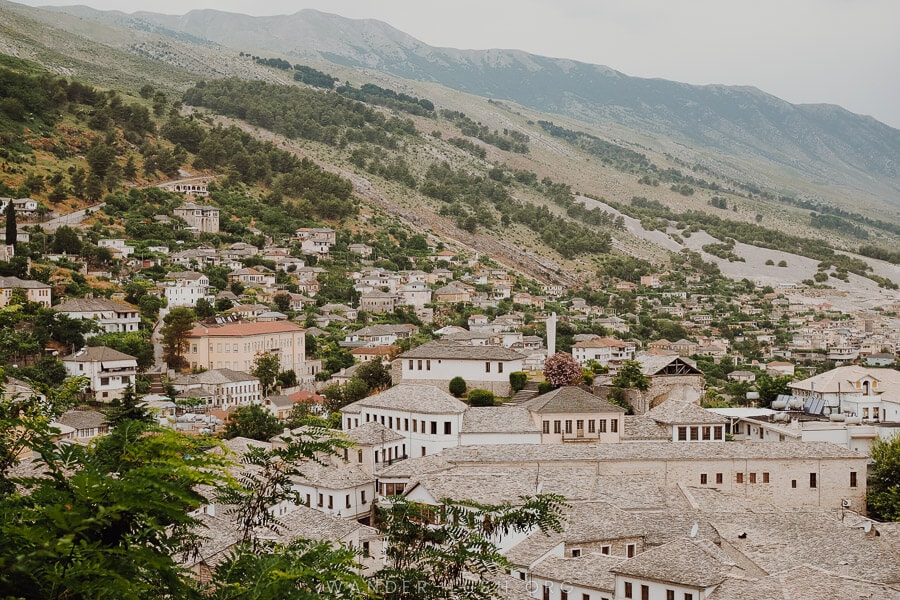
Much like Počitelj in Bosnia and Herzegovina, the Ottoman-style Old City (inscribed along with Berat by UNESCO in 2005) completely captures your imagination from the first moment you tread its cobbled streets.
Layers of Greek, Byzantine, Albanian, Ottoman and Sufi heritage have accumulated in the cracks of Gjirokaster’s facades like moss.
The town is known locally for being the birthplace of revered Albanian writer, Ismail Kadare. Its more sinister claim to fame is as the site of Albania’s most notorious political prison and the birthplace of Enver Hoxha, the country’s one-time despotic leader.
Now, Gjirokaster is beloved for its massive open-air bazaar and incredible multi-story, fortified Ottoman-era houses, and its delicious regional cuisine.
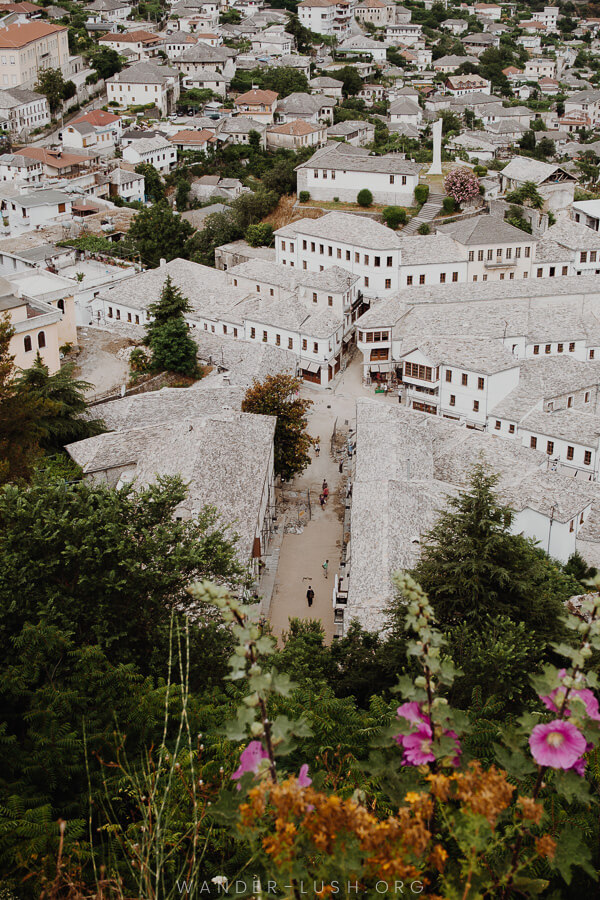
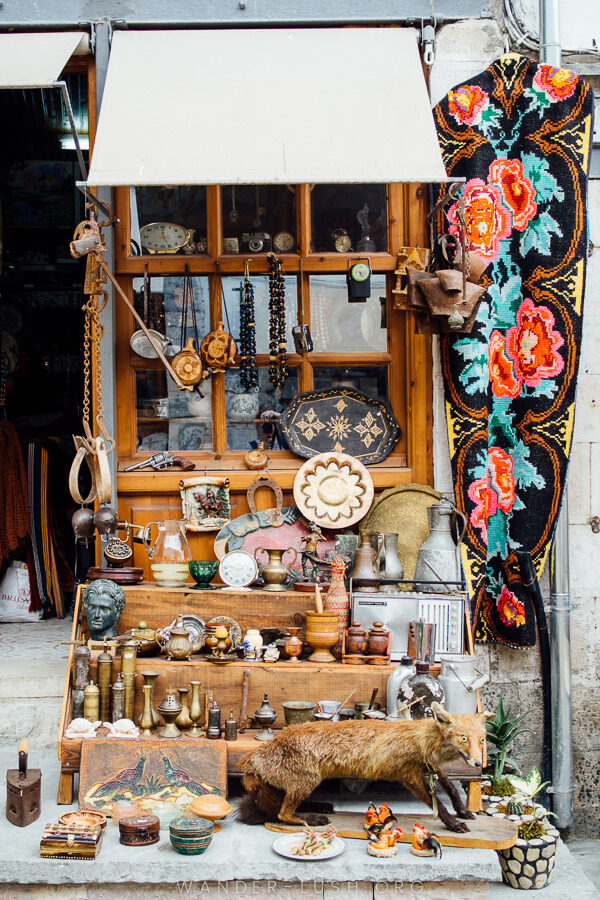
I will always remember Gjirokaster for two reasons: Firstly, it’s the only place in the Balkans where we fell victim to a taxi scam. On a far more positive note, this turned out to be my favourite destination in Albania – mainly because of the Old Bazaar and the Ali Pasha Bridge, which is a short hike from town.
When we retuned to Albania years later, Gjirokaster was at the top of my list of places to revisit. I’m pleased to say that I enjoyed it just as thoroughly second time around.
Don your best walking shoes, brace your ankles and loosen your belt: Here is my guide to Gjirokaster’s cobble-stoned streets, immaculate architecture and best restaurants, freshly updated for 2024.
Please note: This post contains affiliate links, meaning I may earn a commission if you make a purchase by clicking a link (at no extra cost to you). Learn more.
Best time to visit Gjirokaster
Gjirokaster is extremely hot in the middle of summer (40 Celsius-plus). First time around, we visited towards the end of summer high season and found that because of the altitude, the temperature was actually quite pleasant. It was a touch too crowded for my liking, though.
Our return visit was in mid-October, and the weather was much better. The streets were relatively quiet and there was still nice colour in the mountains (plus a touch of autumn foliage).
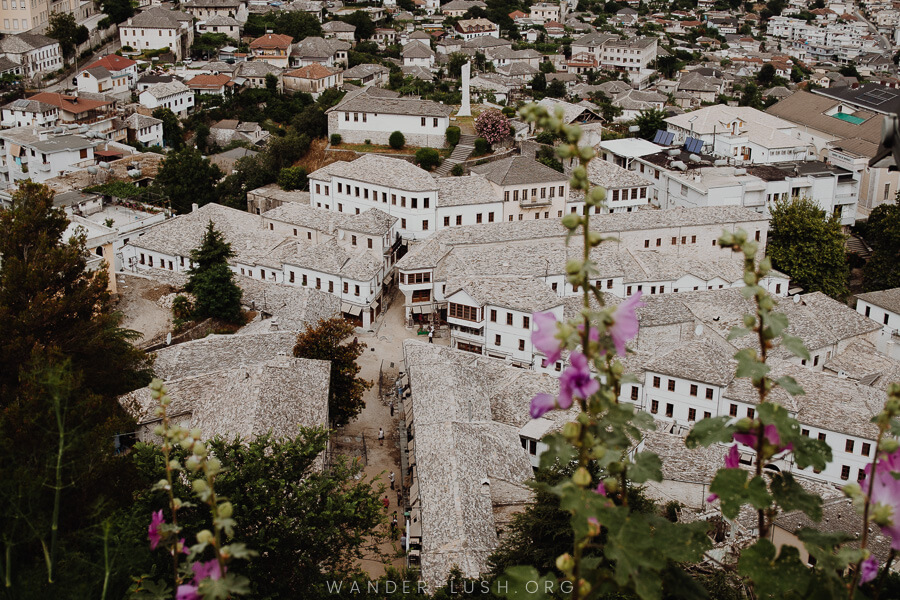
How many days should you spend in Gjirokaster?
Just over an hour by road from Sarande, many people choose to visit Gjirokaster as a quick day trip. I highly recommend staying at least one night, though – it’s a very relaxing little town and a good place to unwind.
There are enough things to see and do to keep you occupied for at least a couple of days. We spent three full days in Gjirokaster and didn’t get bored.
Where to stay in Gjirokaster
Mid-range: On our first trip we stayed at Bed and Breakfast Kotoni, a quaint and nicely decorated guesthouse that’s managed by a young family (with mum in the kitchen). The complimentary breakfast here was the best we had in Albania. The location halfway up the hill means spectacular views across the valley towards Gjirokastra Castle, plus easy access to great vantage points for sunrise/sunset. Check prices and availability on Booking.com.
Apartment: When we returned to Gjirokaster, we stayed in the new part of the city (closer to the bus station) at Jani Studio Apartments. This place is brand new and beautifully decorated, with a kitchenette and work desk. We really liked being in the more ‘local’ part of town, close to restaurants and bakeries. When it’s time for sightseeing, the apartment is a short stroll from the Old Bazaar and castle. Check prices and availability on Booking.com.
Boutique: The incredible Hotel Muse’e is located inside one of Gjirokaster’s historic 200-year-old homes. Proper coffered ceilings and original fireplaces are completely charming, and the breakfast is apparently very good. Check prices and availability on Booking.com.
Luxury: Gjirokaster’s most luxurious hotel, Kerculla Resort, is perched on a hillside overlooking the Old City. The design fuses Gjirokaster’s old-world elegance with all the mod cons you’d expect from a 5-star hotel, including a very generous outdoor pool. Check prices and availability on Booking.com.
Budget: For budget-friendly accommodation, Stone City Hostel offers mixed dorms and a couple of private doubles. The decor is cosy, and it’s a very popular place for backpackers to meet and hang out. They also organise free walking tours for guests. Check prices and availability on Booking.com.
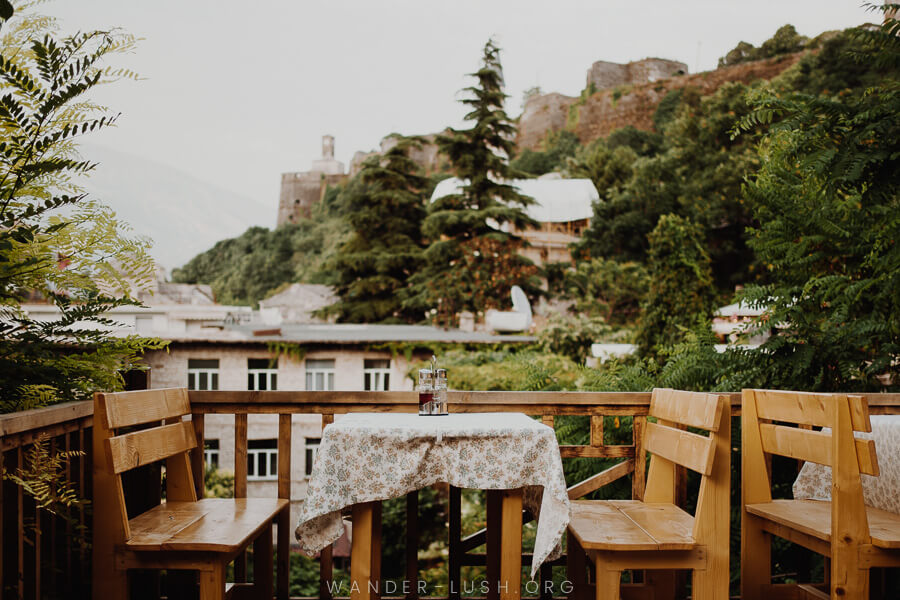
10 best things to do in Gjirokaster
Gjirokaster is a cultural city where you can learn volumes about Albanian history and literally walk back through time by treading the cobbled streets of the bazaar and exploring the depths of the underground city below.
Whether you’re visiting as a day trip from Saranda or you choose to spend a few nights in town, here are the very best things to see and do in Gjirokaster.
1. Start your morning with a view from the Gjirokaster Obelisk
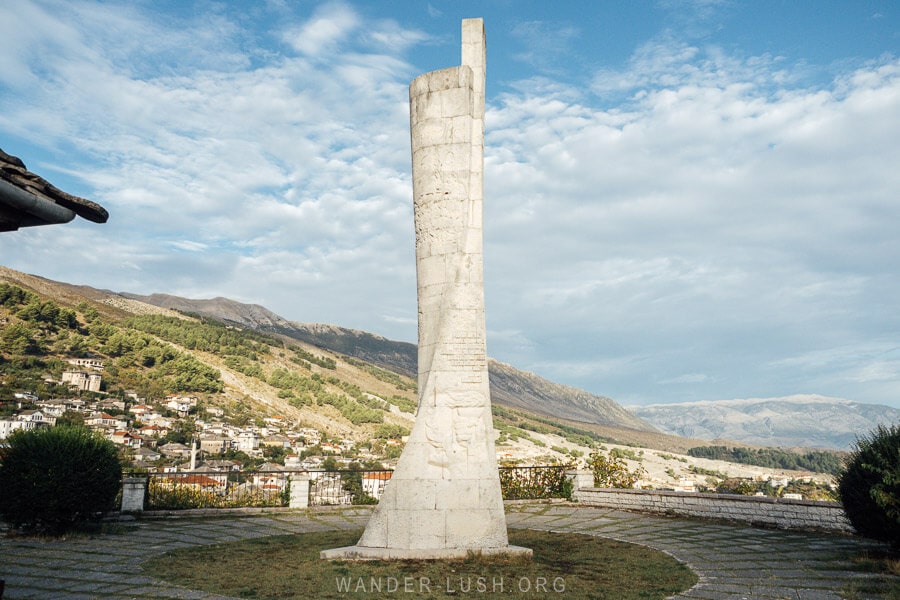
Rising above the rooftops of the Old Bazaar like a wisp of white smoke, the Gjirokaster Obelisk is not a war memorial, but rather a monument to education and the Albanian language. Its location on a rise close to the city’s first school creates the impression that the stone obelisk is much taller than its seven metres.
This is the first place you should visit in Gjirokaster. From the base of the monument and the surrounding garden you get an incredible view of the city including the Old Bazaar and mosque, the castle, and the Drinos Valley in the distance.
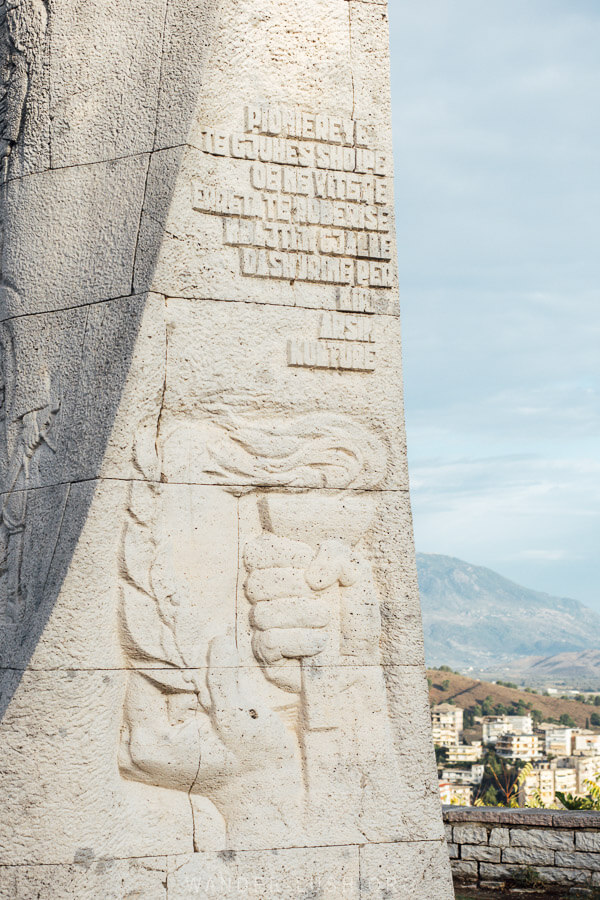
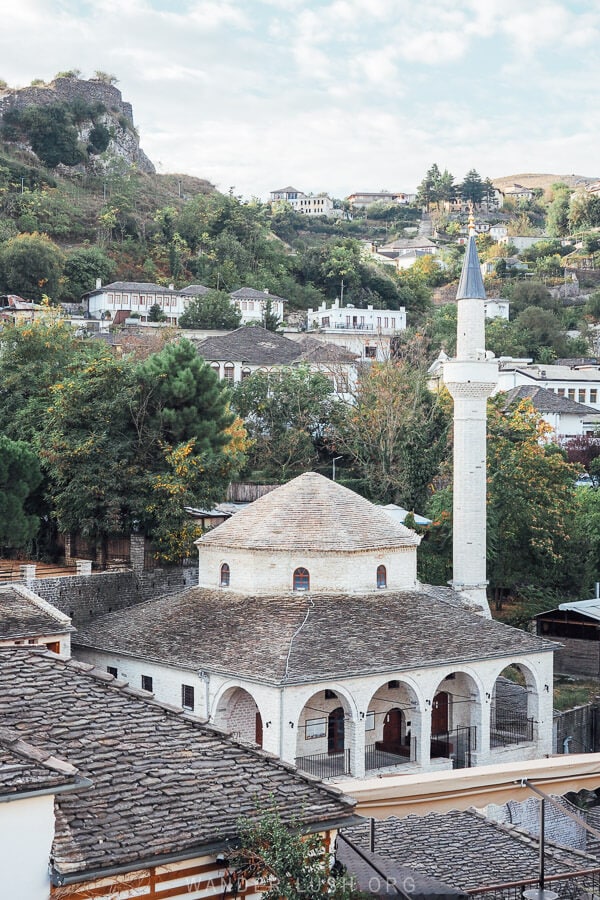
For the best light, I recommend going an hour or so after sunrise.
The way up to the obelisk is a little tricky to find: Look for the arched doorway on Rruga Zejtareve and follow the stairs to the top (past the hotel entrance) to reach the monument.
2. Explore Gjirokaster Castle (Kalaja e Gjirokastrës)
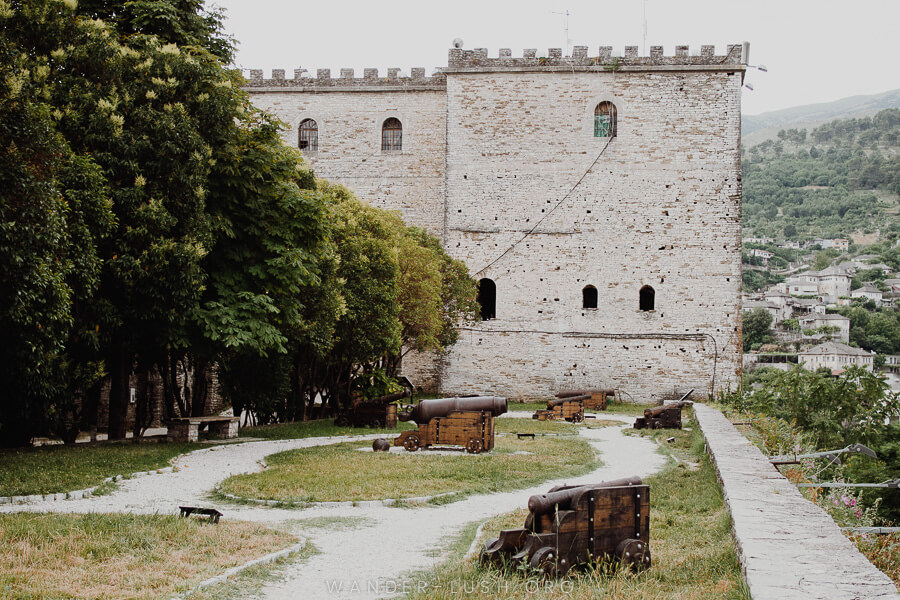
Sitting atop the highest hillock like a white stone coronet, the fortress is Gjirokaster’s crowning jewel. There are 158 castles in Albania, and I think this one is among the most impressive. It should be top of your wish list.
Construction on the walls began as early as the 6th century (some sources say the 3rd century). It’s thought that the distinctive hue of the rock used gave Gjirokaster its name, which means ‘Silver City’ in Greek.
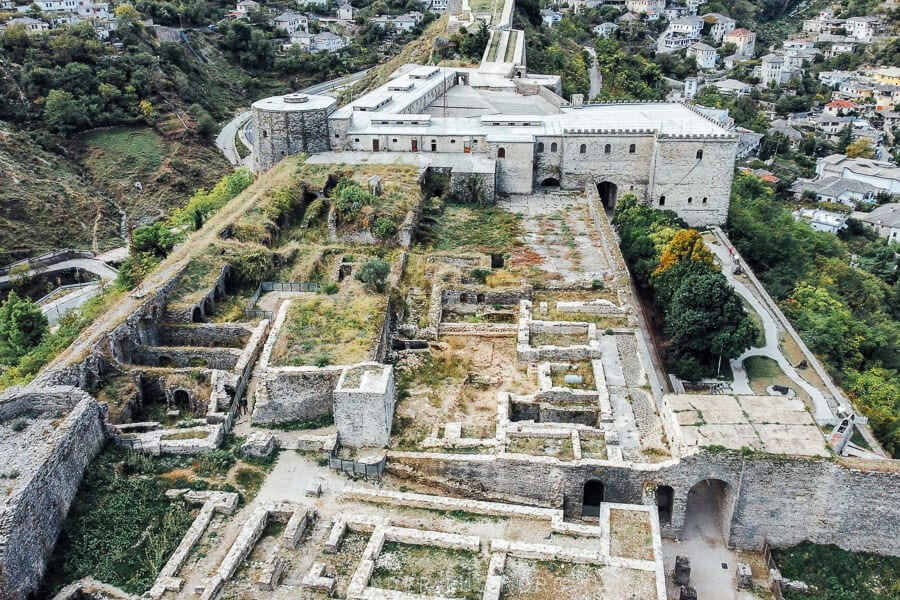
In the 18th century, a clock tower was erected. A church, fountains and stables were also added to the internal structure. Under the notorious King Zog, parts of the fortress were converted into cells for political prisoners.
The castle continued to serve as a notorious prison under Albania’s Communist Regime, right up until the 1970s.
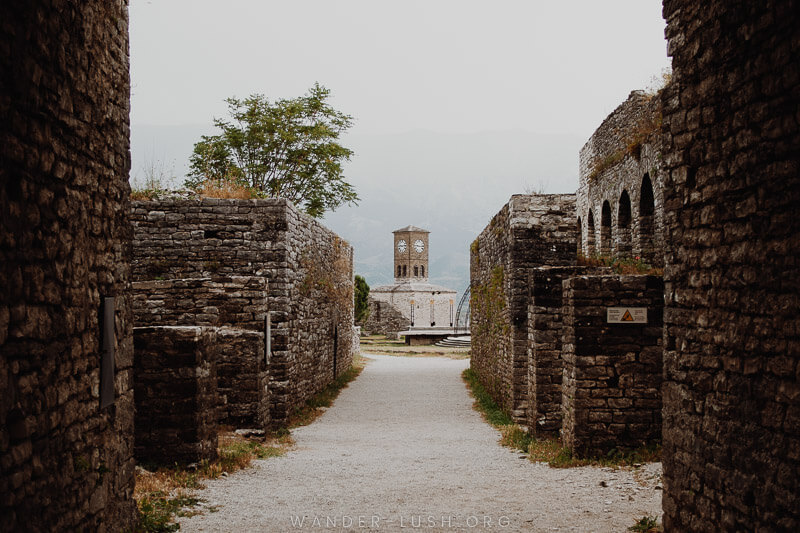
I’m not a huge fortress person, but I really enjoyed walking through the grounds of the Gjirokastër Castle. The lofty stone arches are very impressive, the internal tombs are extremely eerie, and the open yard scattered with cannons offers awesome views over the Old Bazaar.
It’s also noticeably cooler inside the stone tunnels – so put this one down for a middle-of-the-day activity if you’re visiting in summer.
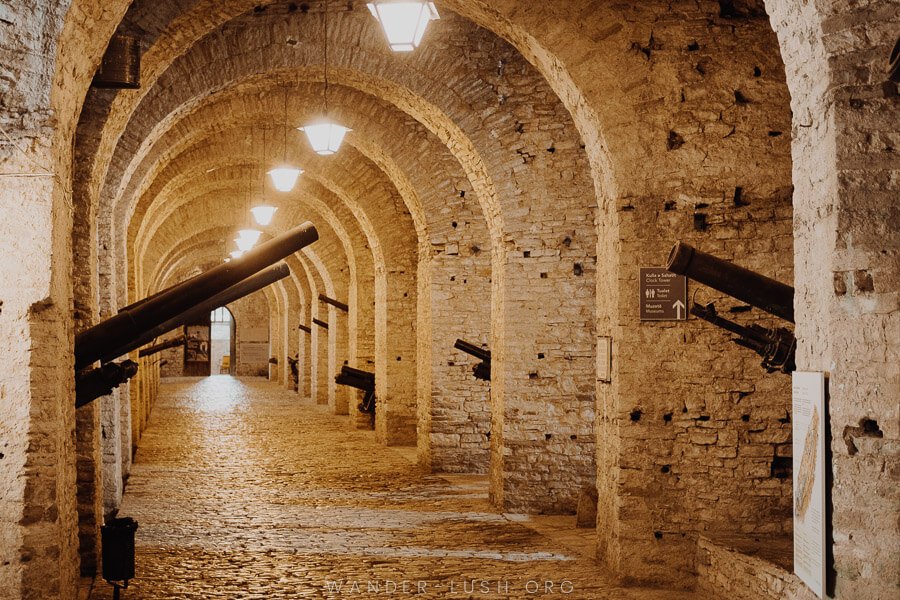
Look out for the replica Monument of the People’s Power (the original statue is now in Permet), and in the castle yard, the Italian Fiat tank from WWII, and the United States Air Force T33 Shooting Star, which was captured in 1957.
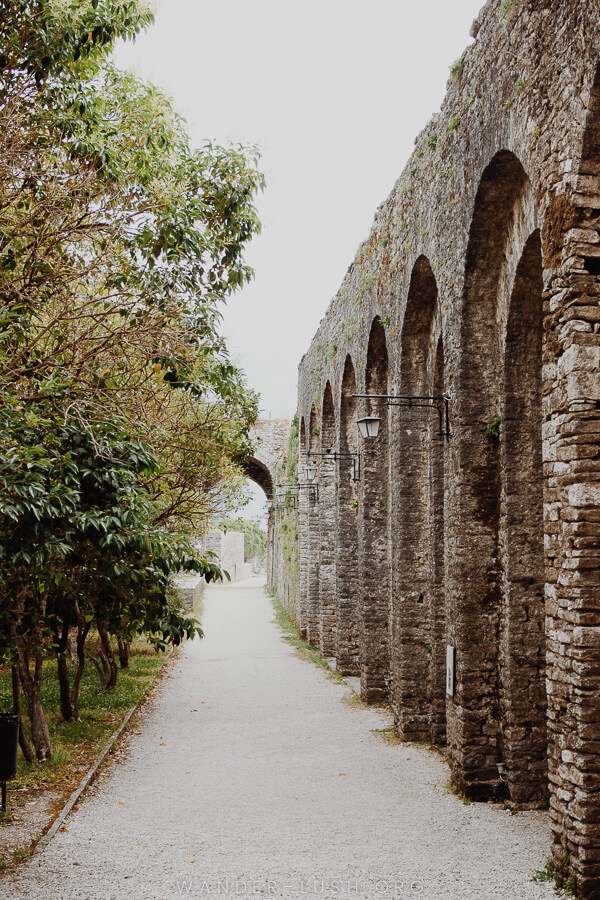
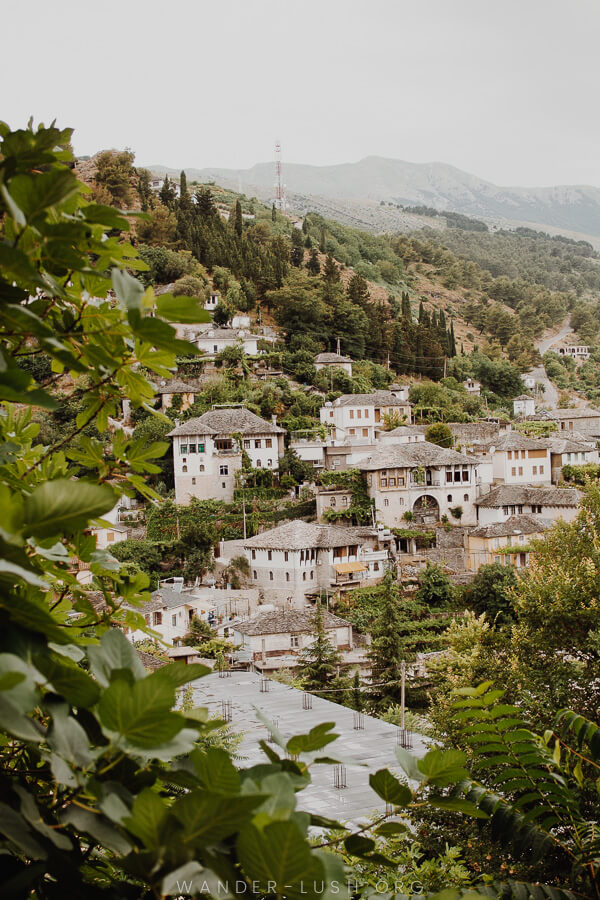
Once every five years in May, Gjirokaster Castle hosts Albania’s National Folklore Festival, a showcase of traditional music and dance. There is a purpose-built outdoor stage just near the clock tower.
The last event was in May 2021, and the follow up is scheduled for May 2026. If you happen to be visiting this spring, I highly recommend checking it out.
- Info: Gjirokaster Castle is open daily from 9am-6pm in summer and closes early at 4pm in winter. Admission costs 400 LEK (note that this does not include entrance to the museum, see below).
3. Visit the Gjirokaster Museum
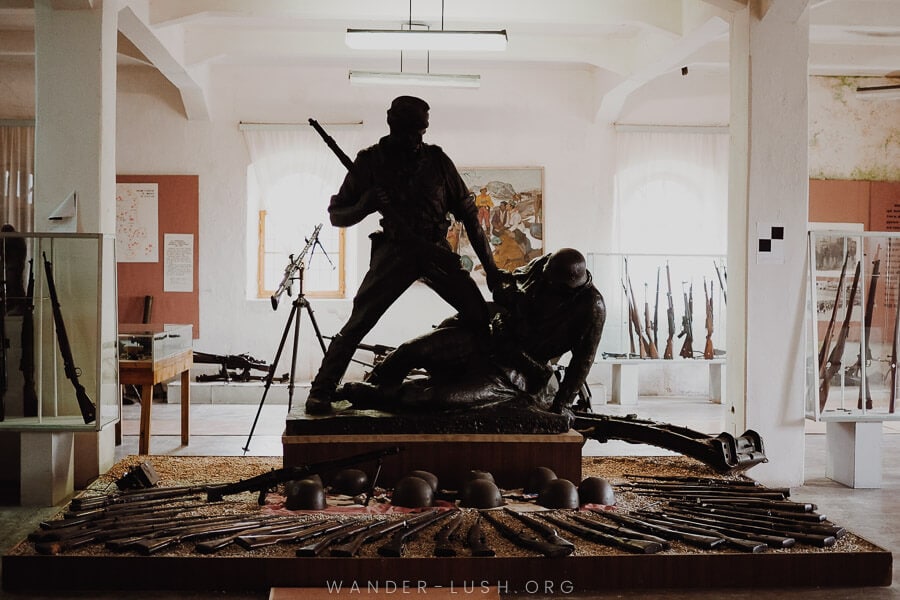
Whatever you do, don’t skip the Gjirokaster Museum inside the castle, where information about the city’s rich history is presented alongside biographies of some of modern-day Gjirokaster’s residents.
I can’t remember the last time I read every single word of a museum display. It’s well-written and completely gripping. I really can’t recommend it highly enough. It takes around 1-1.5 hours just to go through the texts and photos. And once you start reading, you won’t want to stop – so make sure you leave yourself enough time.
The upstairs Military Museum (officially the National Museum of Armaments) is less appealing and safe to skip unless you’re particularly interested in war history.
Alongside Ljubljana Castle, this is one of the best castle museums in the Balkans and is absolutely worth paying the additional fee to visit.
- Info: The Gjirokaster Museum is open from 8am-5pm in summer and closes early at 4pm in winter. Entrance costs an additional 200 lek per person.
4. Wander through the charming Gjirokaster Bazaar
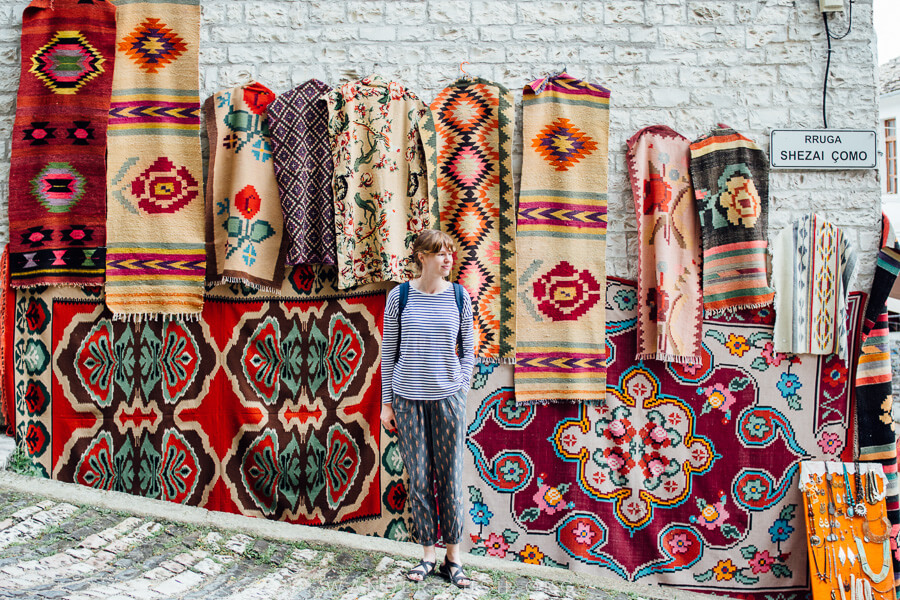
Gjirokaster Old Town is a sprawling Ottoman-style Bazaar, originally constructed in the 17th century and completely rebuilt 200 years later following a devastating fire. The serpentine streets are decorated with a gorgeous interlacing pattern made from white and black stone.
As we learned at the Fortress Museum, most of the cobbles were laid by one man, the best stonemason in town!
Sadly for us, our first visit coincided with the first time in years that the stones were being re-laid (of course!). Even though the bazaar looked like a construction site, we still found beauty in the white-washed stone buildings and slate roofs.
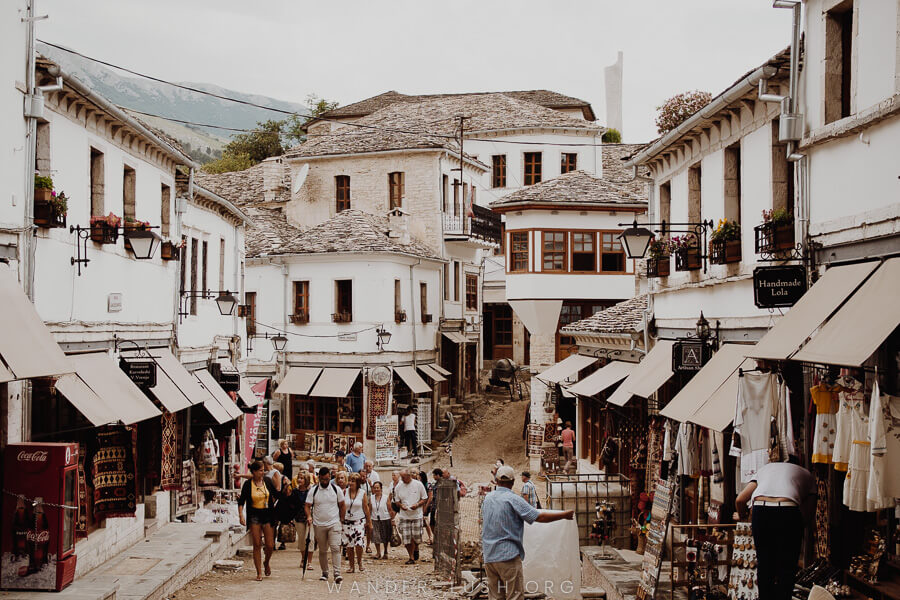
When we returned, the reconstruction was complete – and boy does it look fabulous. I flew my drone to get a photo of the braided design from above.
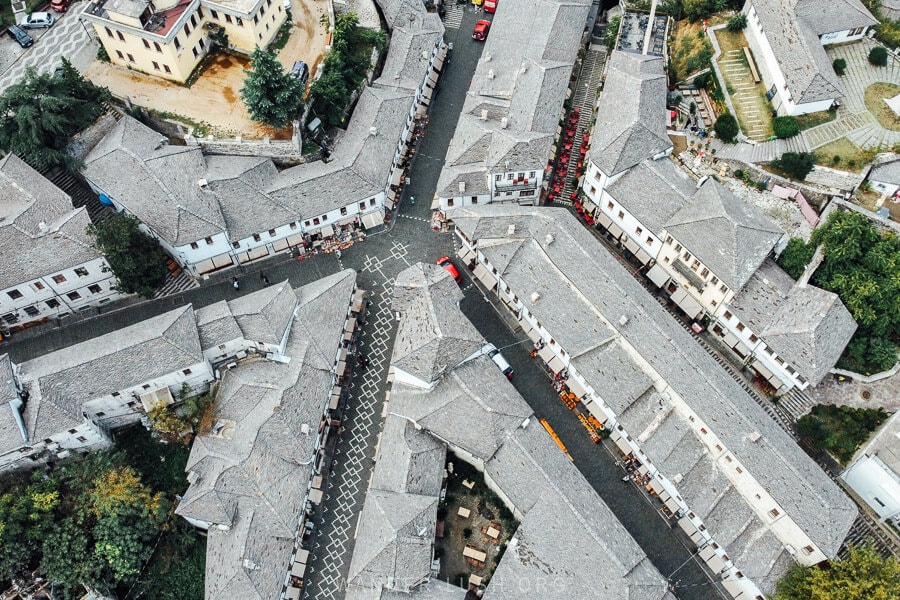
I highly recommend taking an early morning walk through the Gjirokaster Bazaar before the shops open and the crowds descend.
You’ll see shopkeepers setting up for the day, women in heels clapping across the cobblestones on their way to work, and groups of men dressed in suit jackets clasping worry beads in one had and holding an espresso to their lips with the other.
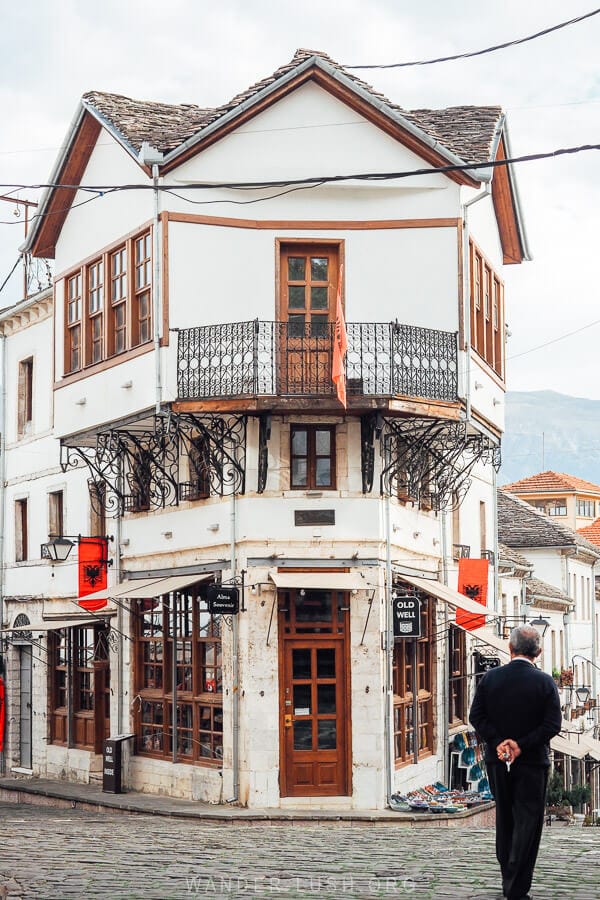
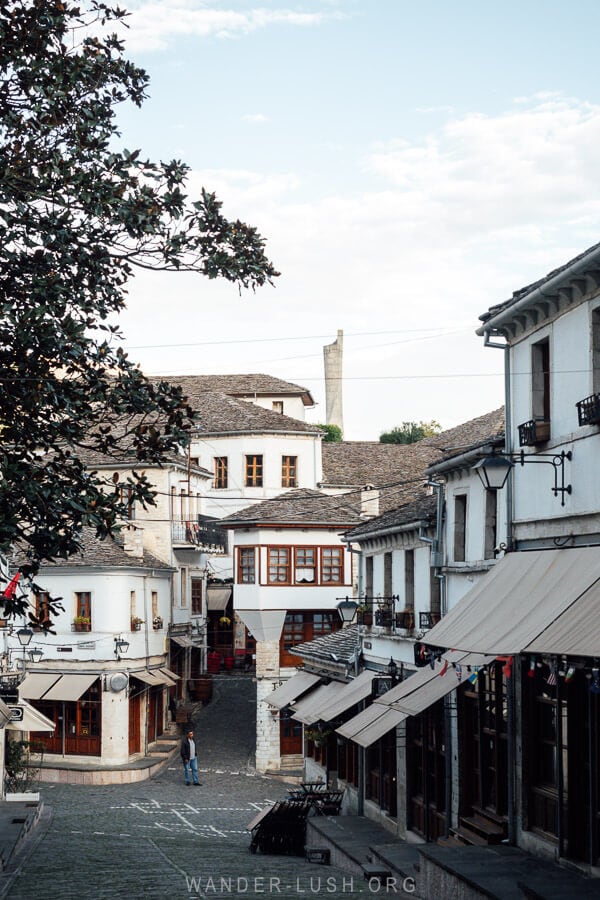
Return later in the day to browse the rows of little shops and cafes formally organised with uniform signage. This characteristic makes Gjirokaster Old Town feel a bit less atmospheric than the hodgepodge bazaar in Skopje, for example. A lot of the shops peddle mass-produced souvenirs, but there are some gems amongst the tourist traps.
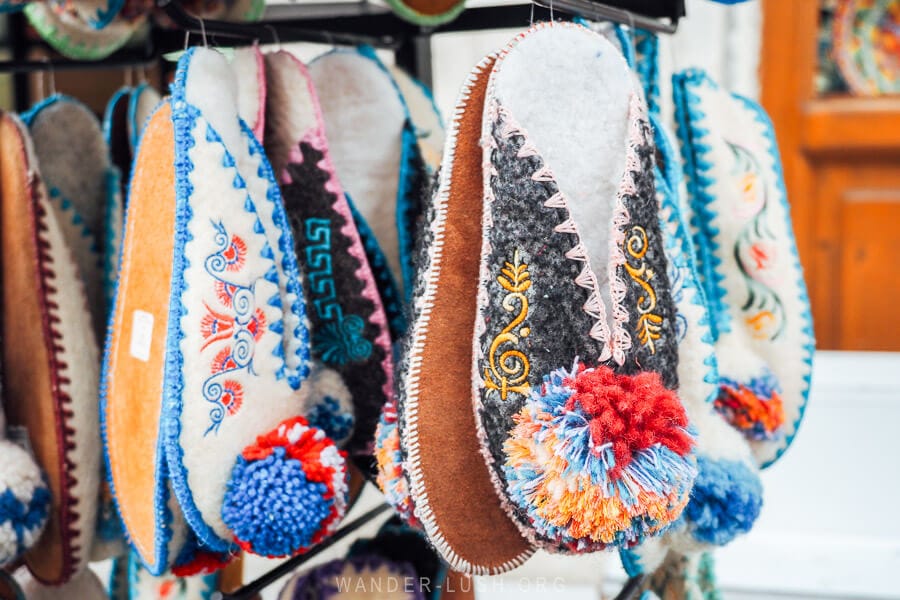
If you do want to do some shopping, look out for products made from local materials: Kitchen utensils carved from olive wood, herbal teas, olive oil, local honey, and raki. Zahire Shqiptare and Edua Gjirokaster both sell nicely presented artisan products.
Vjollca Mezini‘s shop is the place to buy Albanian embroidery (she is a master), and Anastas Petridhi and Muhedin Makri craft souvenirs from wood and stone respectively.
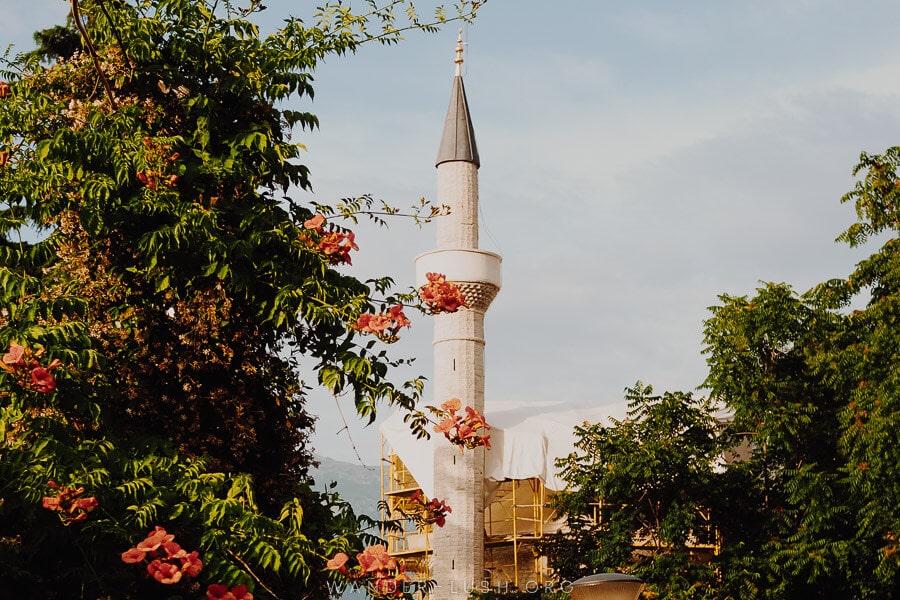
Another highlight of the Old Bazaar area is the 1757-built Gjirokaster Mosque or Bazaar Mosque. Spared from destruction at the hands of the communists, it was used as a circus training school until the 1990s. No fewer than seven stone ablution fountains and several hammams are located nearby.
5. Hike to Ali Pasha’s Bridge
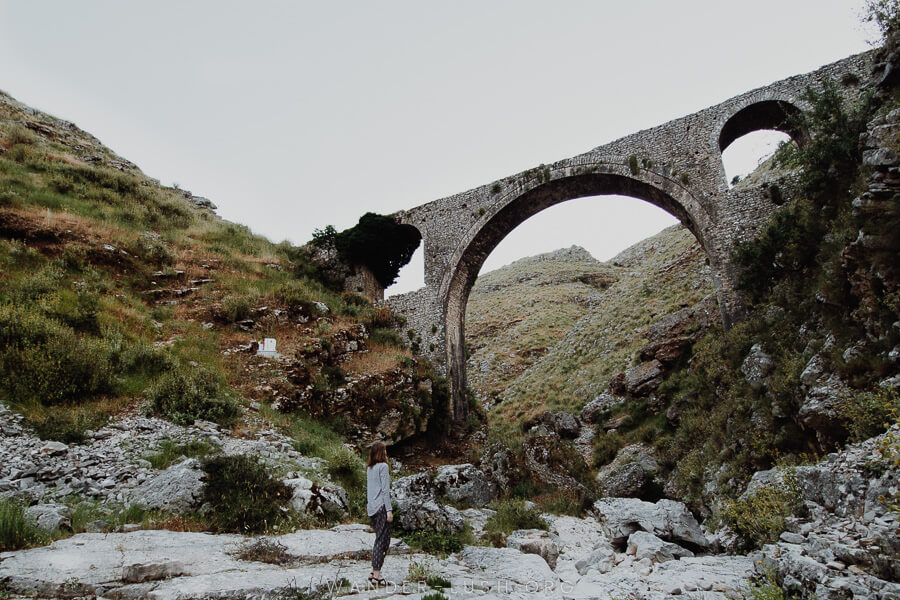
One of my favourite activities in Gjirokaster is hiking to the Ali Pasha Bridge. We did this walk on our first visit to the city, then discovered an even more impressive segment of Ottoman aqueduct not far away near the city of Tepelena (see my Gjirokaster day trip suggestions further below).
This ‘bridge’ near Gjirokaster city is not a bridge at all, but rather a small portion of a once-massive aqueduct built to channel water to the castle’s cisterns from mountain springs 10km away.
The aqueduct was commissioned by Albania’s Ottoman ruler, Ali Pasha of Ioannina, at the beginning of the 19th century. In the 1930s, it was largely dismantled so its stonework could be used to build prison cells inside the fortress. A single span of the aqueduct is still standing today, sandwiched in a narrow gorge just outside town.
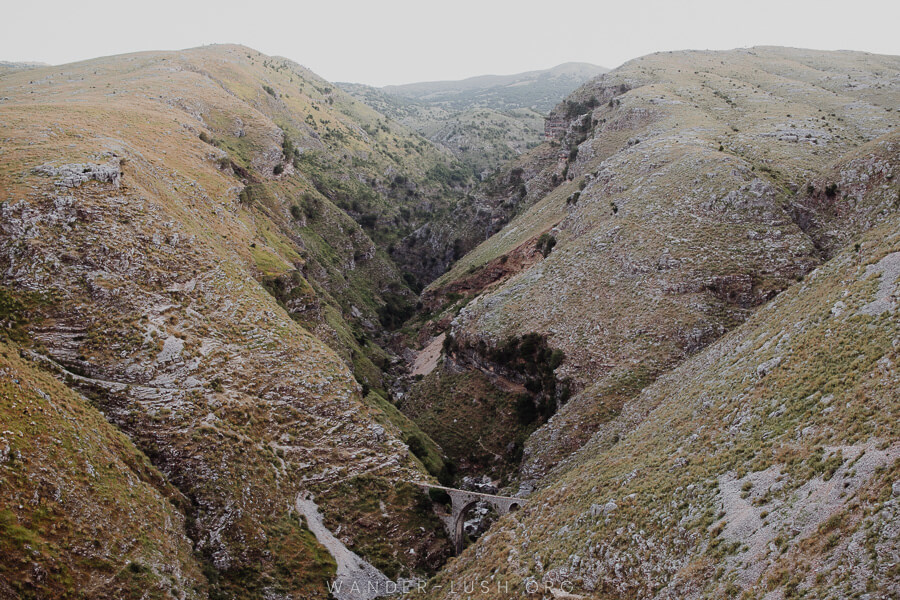
It takes about 45 minutes of uphill walking to reach the aqueduct from the castle. Most of the way is a bitumen road, with a final push along a rocky path to get down into the valley.
You then walk along the dry riverbed to get up close to the structure. It’s possible to climb on top, but given the aqueduct’s age and remote location, I don’t recommend it.
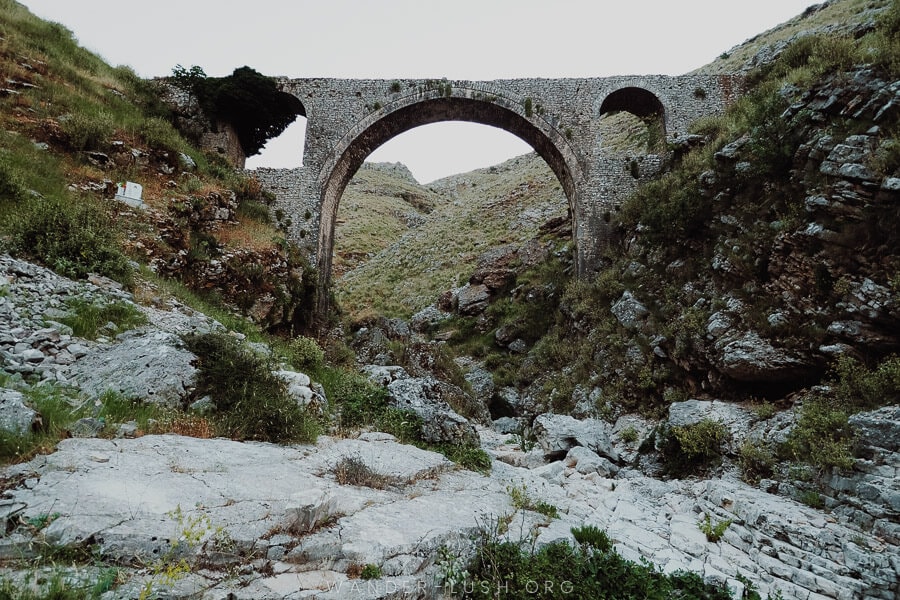
When we visited, we were the only tourists around, joined only by two shepherds having a conversation by yelling at each other from either side of the gorge. It’s a pretty incredible sight as you approach the aqueduct from an elevation, and even more impressive to see this feat of engineering up close.
Just don’t do what I do and wear sandals – sturdy shoes are much more suitable!
- Info: You can find approximate coordinates for the Ali Pasha Bridge here on Google Maps. On the way up (or down), grab a meal at Taverna Tradicionale , a sweet homestyle-restaurant in the Manalat neighbourhood. The friendly staff there can help with directions to the bridge if you need them – they even lent us a guide book when we visited.
6. Tour the Cold War Tunnel
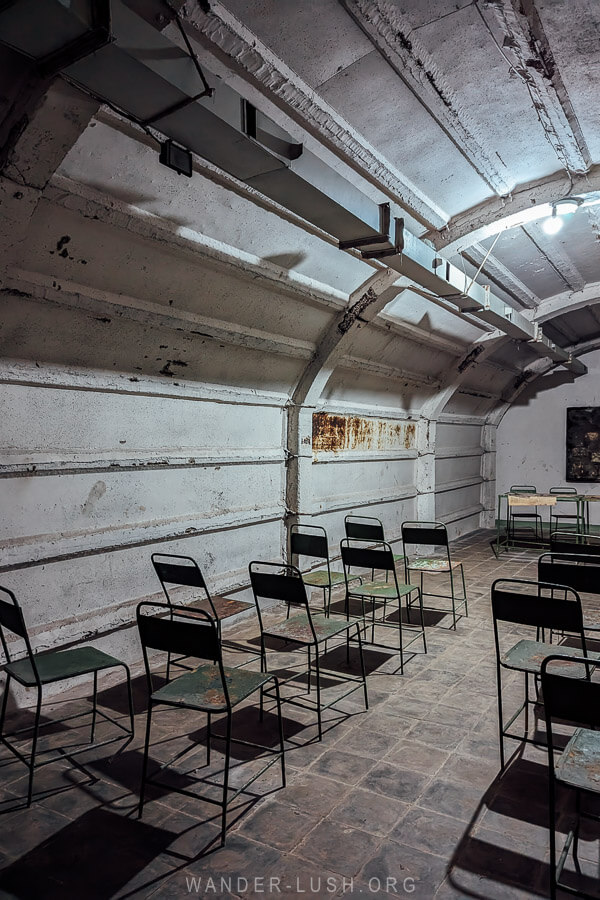
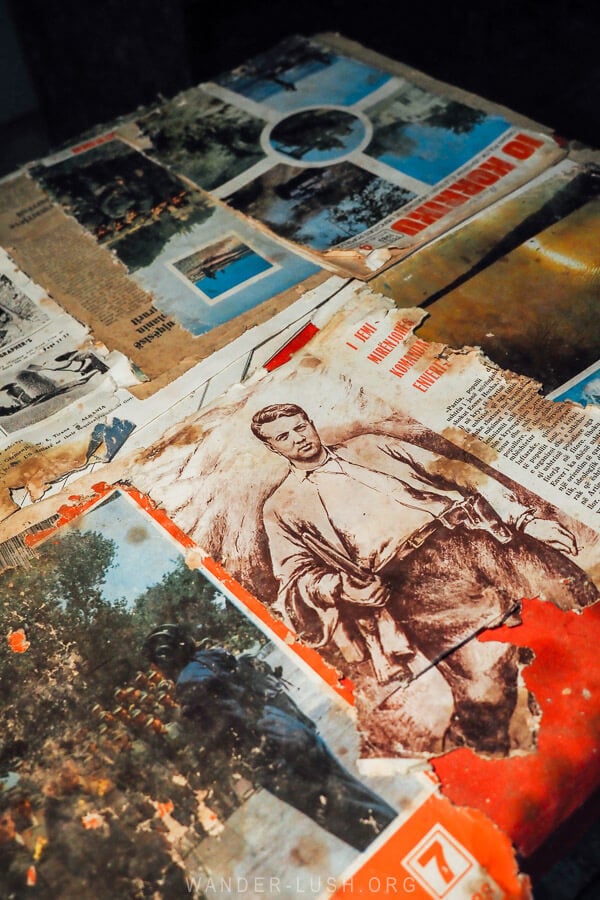
The so-called Cold War Tunnel in Gjirokaster is a massive underground network of bunkers and chambers built during the communist period. It is one of only three anti-atomic bunkers in Albania, and the only one of its kind outside the capital. It was built here in the event that Enver Hoxha, who was born in Gjirokaster, might be visiting family when the country came under nuclear attack. Naturally – like all of Albania’s 168,000 bunkers – it was never used.
The bunker was finished in the 1980s and unlike the museum bunkers in Tirana, this one is unaltered (aside from the addition of lighting). Much of the contents were looted, but the bunker still contains original, in situ furniture, paperwork and other ephemera.
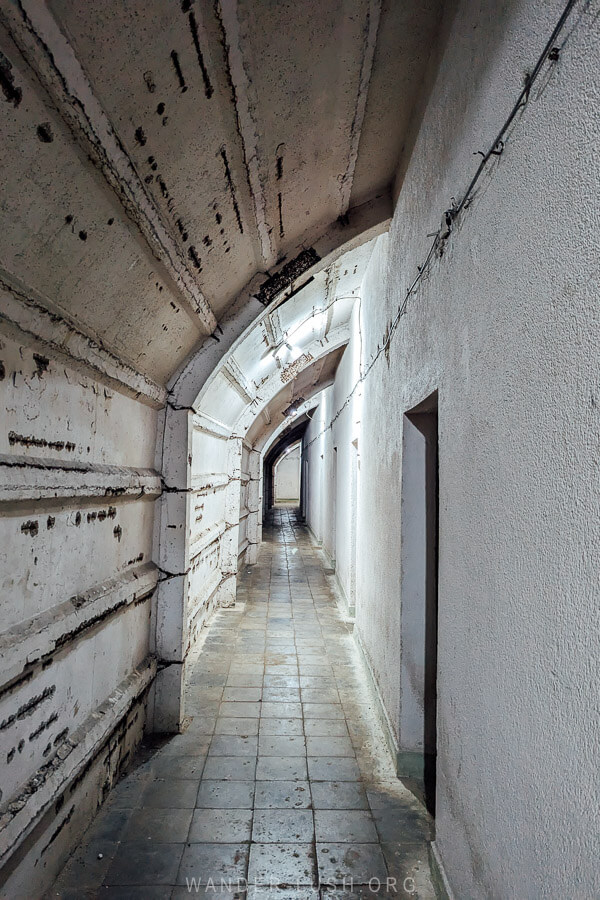
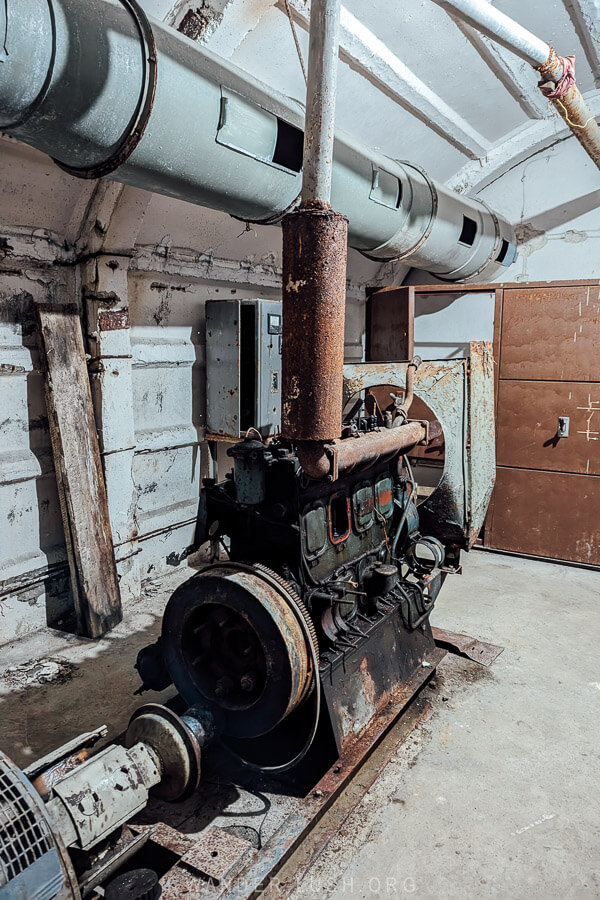
On a 30-minute guided tour of the tunnel, you get to see some of the 59 rooms and corridors that were designed to safeguard 200 party elites and politicians. There is a generator room and a mess hall, both still with their original equipment, offices for various ministers, a toilet block (men only!), and strategically burrowed directly under Gjirokaster Castle, a massive conference room to host the war cabinet.
Tours of the Gjirokaster tunnel are organised by the local tourism office. In summer, tours depart on the hour – but at the time of my visit in low season, they were working on an ad-hoc schedule, with the first tour of the day at 11am. You can try calling ahead, but whoever answers the phones apparently isn’t a morning person – they hung up on me twice!
I suggest checking times in person and buying your tickets in advance from the Tourist Information Centre, which is also the departure point for the tour (one of the entrances to the bunker is directly behind it).
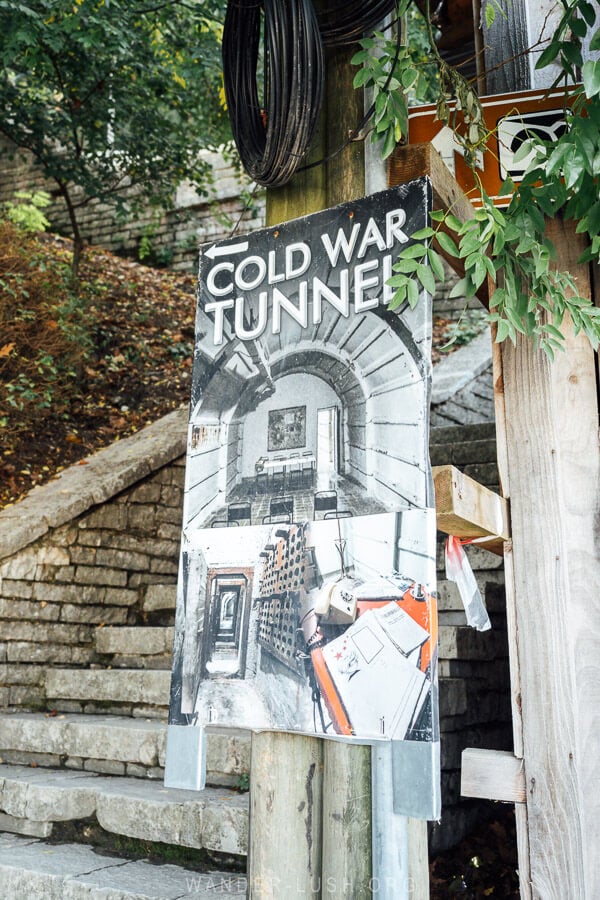
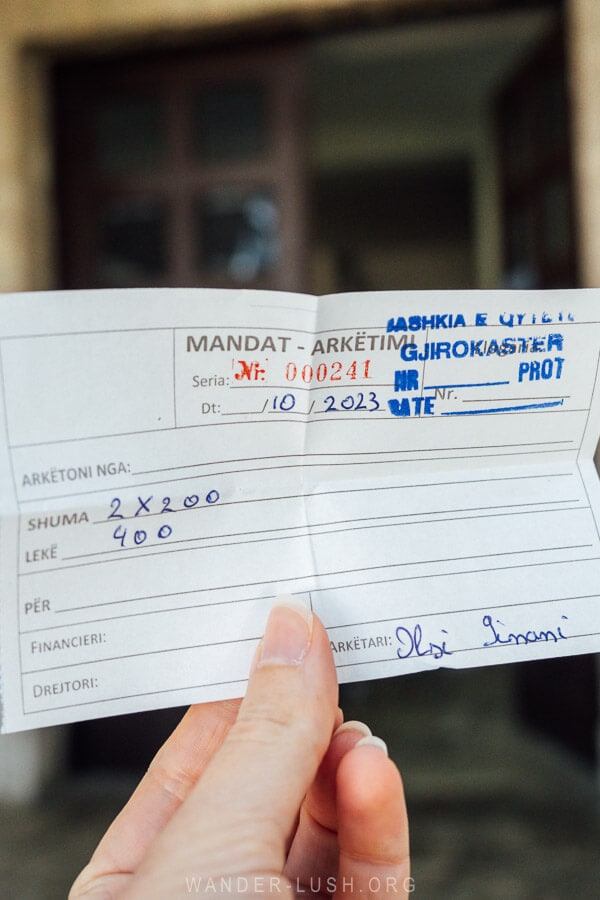
From Çerçiz Topulli Square, follow the big staircase up towards the socialist party HQ and look for the small office in the bottom of the government building. The bunker is a steady 16 degrees Celsius inside, so don’t forget to bring a jacket.
- Info: Entrance to the tunnel costs 200 LEK per person.
7. Step inside one of Gjirokaster’s fortified stone houses
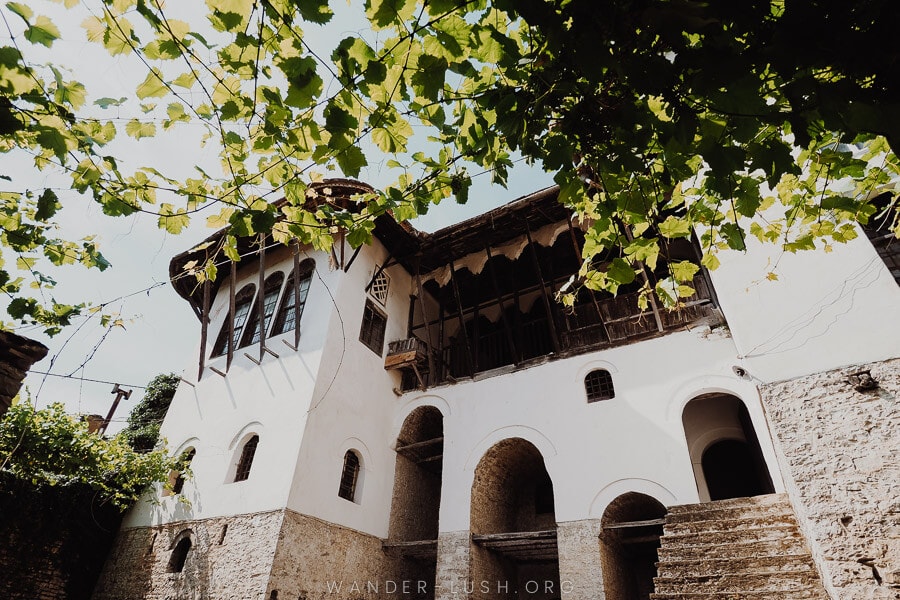
More than 500 of Gjirokaster’s distinctive traditional houses have been designated as cultural monuments under the UNESCO scheme. From the fortress, you can see some of the most intricate symmetrical houses pressed into the hills that rise up above the bazaar.
None are more spectacular than the towering fortified houses. As ominous as Transylvania’s fortified churches and yet as elegant as the most opulent mansions in Plovdiv, these homes remind me of the tower houses in Svaneti in their robustness.
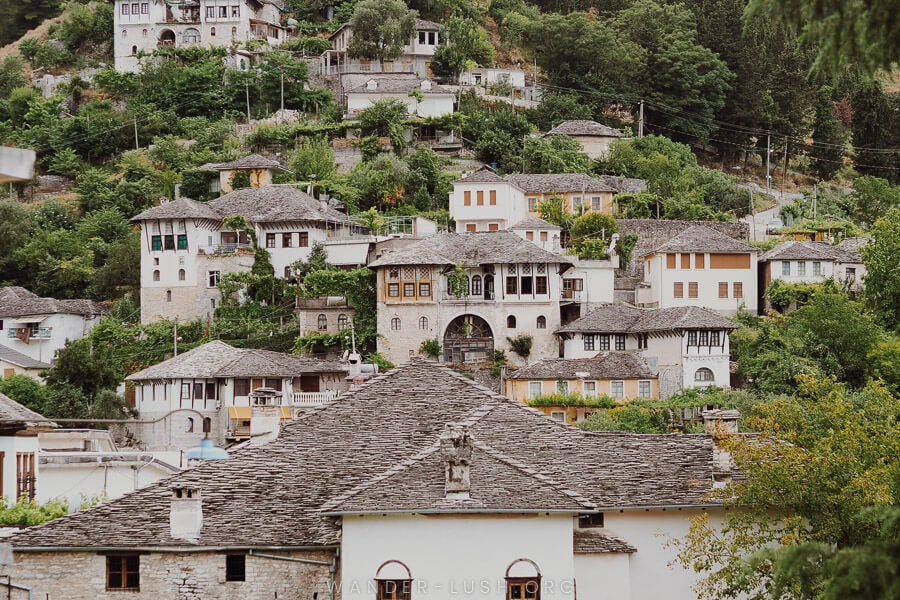
Most of them date back to the 17th and 18th centuries. The unusual profile is created by a tall stone block foundation up to five stories high. Inside, sleeping quarters, guest rooms and hammams are woven together by a network of passageways and secret doors, wrapped in multiple internal and external staircases. The flat stones used for rooftops are the reason Gjirokaster got its nickname, ‘The City of Stone’.
Under communism, the fortified houses were nationalised before later being returned to their rightful owners. Some of them were restored. Descendants of the original owners now steward the houses and welcome guests to tour their chambers.
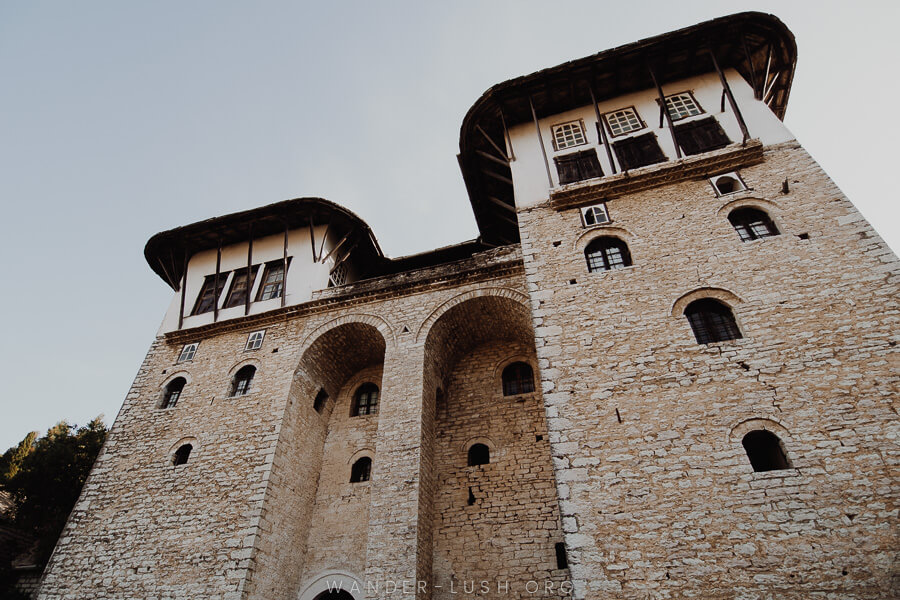
There are three traditional houses I recommend visiting. Zekate House, with its twin towers and gravity defying double-story stone arches (pictured), is absolutely worth viewing from the yard outside.
If you want to venture in, entrance costs 250 LEK per person. The interior is nothing flashy, but there is one room on the upper floor that has beautiful painted walls.
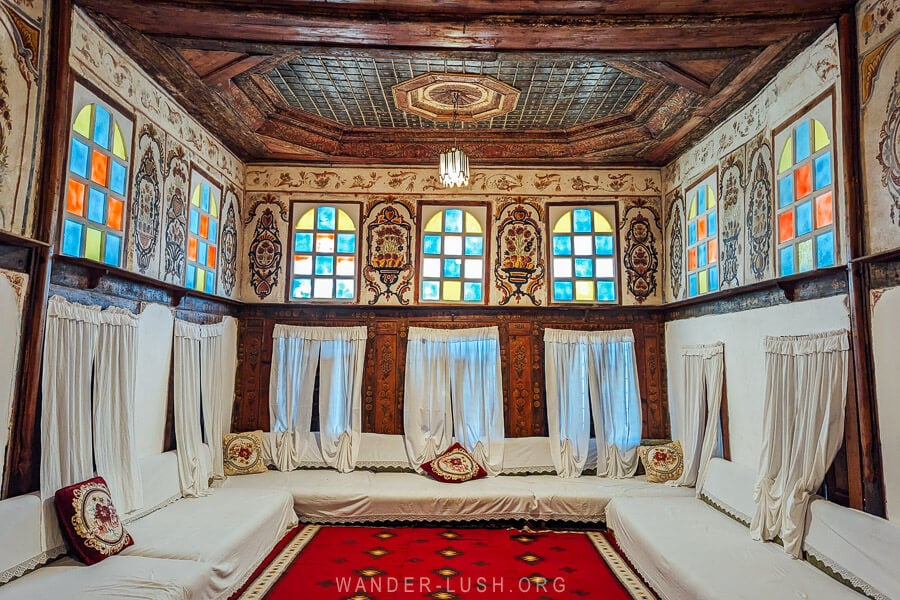
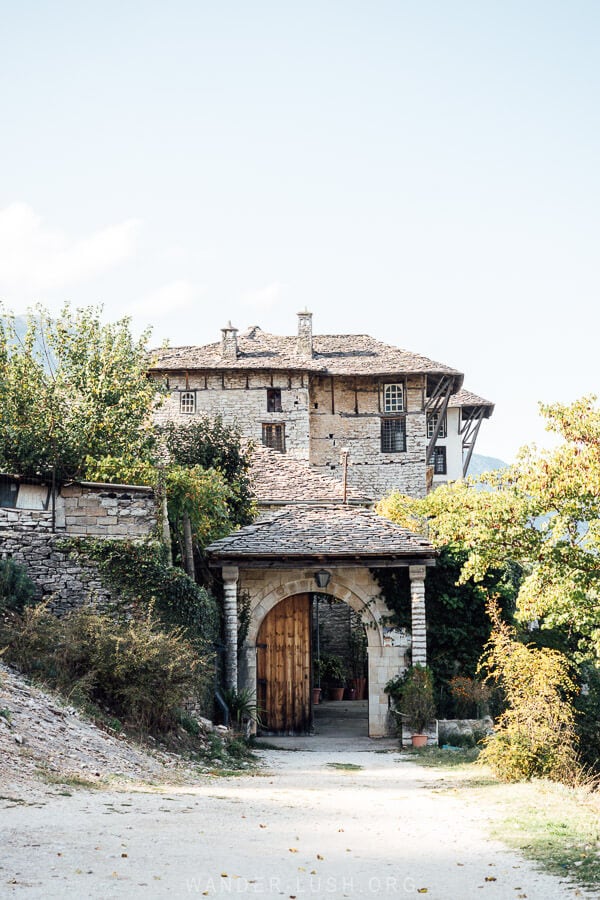
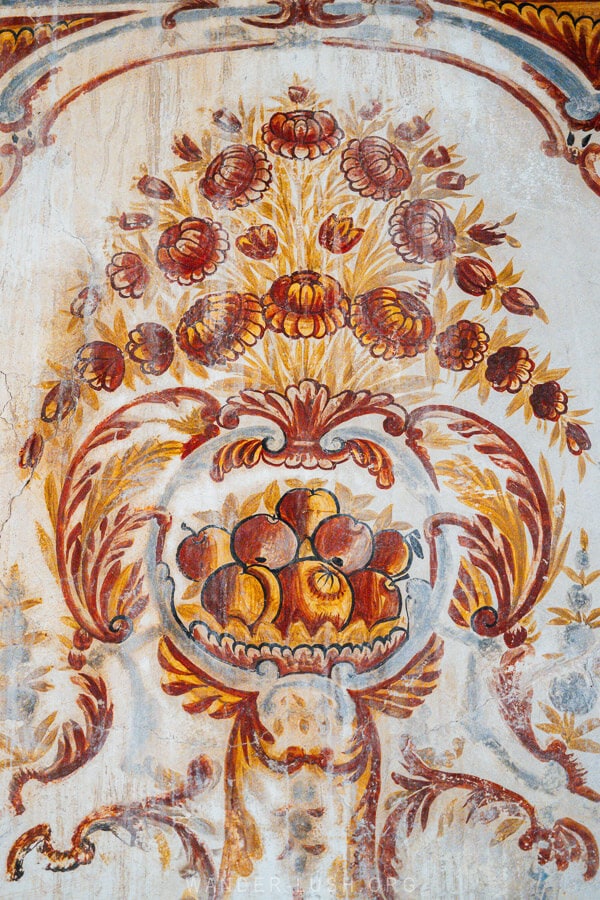
Skenduli House, built in the early 1700s, is more modest. It is also more expensive: 300 LEK gets you a short guided walk-through with the ninth-generation caretaker who speaks French and German (no English). Tours are generally available between 9am and 7pm.
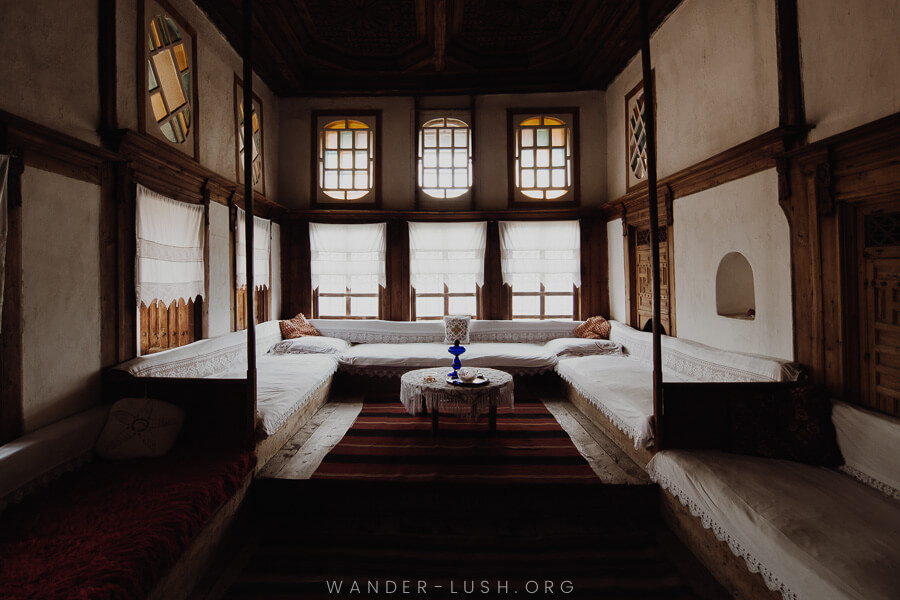
On a tour, you’ll be led deep into the belly of the house to visit the bunker (made to protect its residents from canon fire rather than nuclear attack). Skenduli contains an impressive six hamam baths and 12 winter and summer rooms, plus a hidden mezzanine where women could sit and spy on their betrothed.
8. Browse the Ethnographic Museum
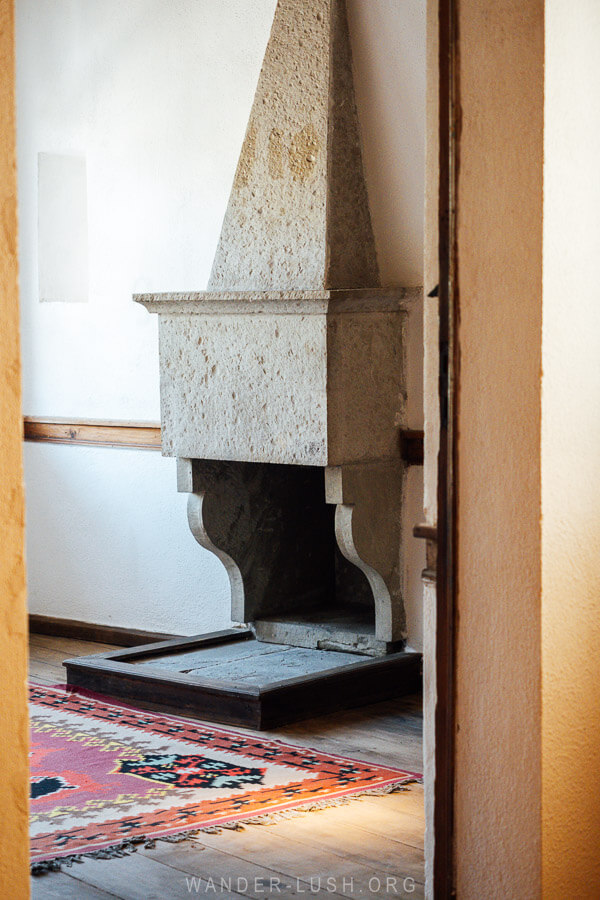
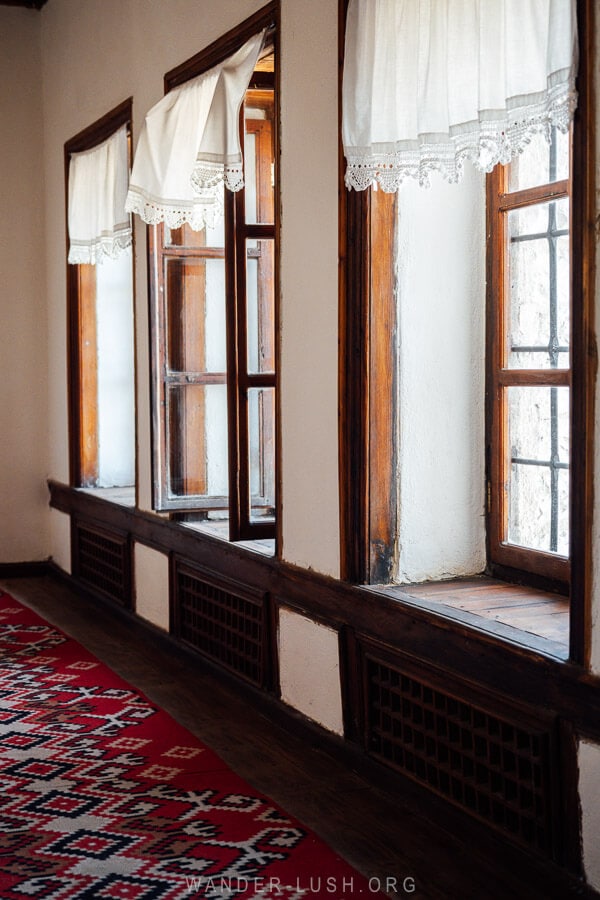
The third house, Gjirokaster’s Ethnographic Museum, is located in Palorto Quarter on the site of Enver Hoxha’s birth house. After the original structure burnt down, it was replaced with a model house that mirrors the town’s Ottoman-era buildings.
Like other house museums in the region, it’s a window onto 19th-century Albanian life. Inside the four-story home, you’ll find a display of costumes, textiles and household objects. The didactics here are very in-depth and well written. You will learn a lot about the city of Gjirokaster, its festivals and customs.
There are only a few references to the dictator in the museum: A few Hoxha family heirlooms are incorporated into the exhibition, and there are several rooms that explore the communist terror.
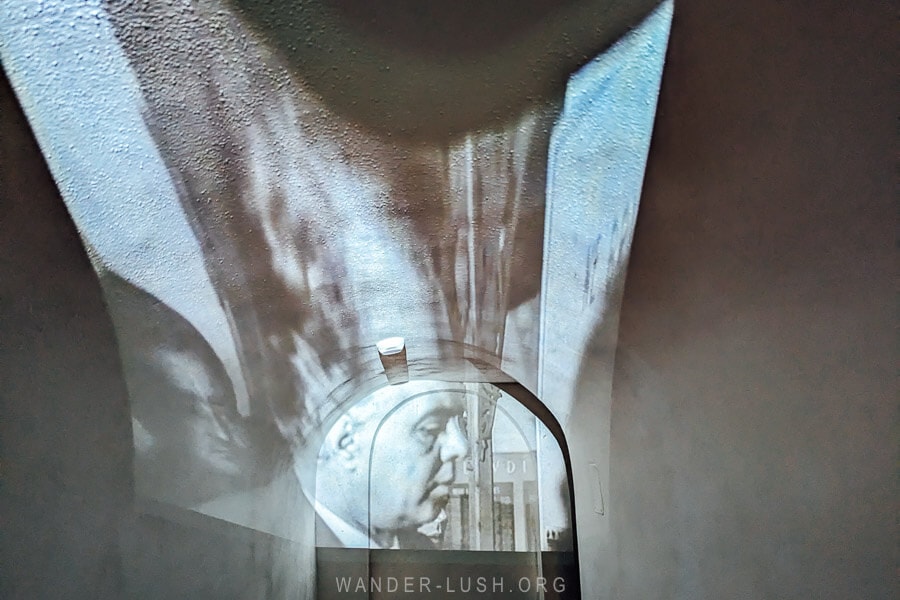
- Info: The Ethnographic Museum is open from 9am-6pm daily and closes early at 4pm during winter. Entrance costs 500 LEK.
9. Lose your breath in Manalat Quarter
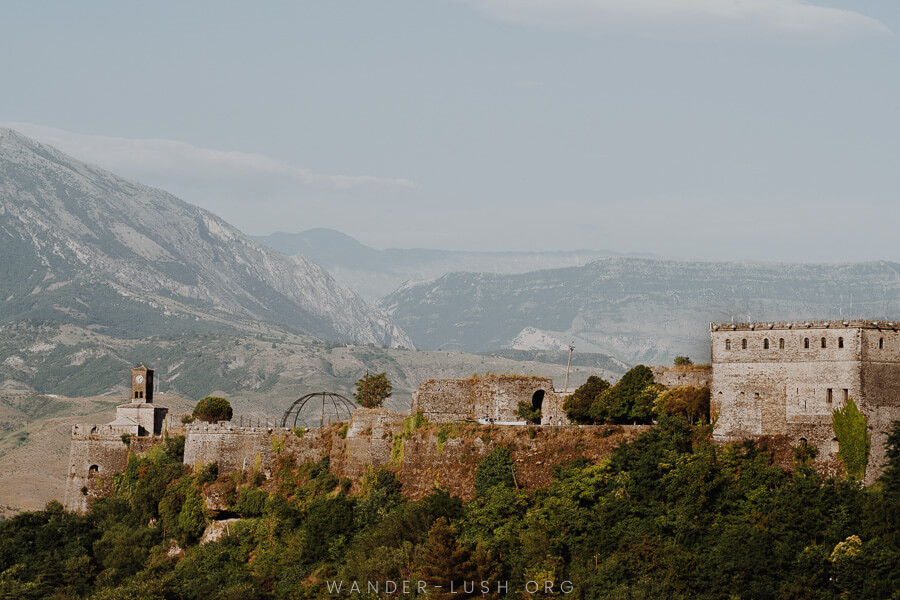
Some of Gjirokaster’s most beautiful houses have their addresses on the snaking streets of Manalat Quarter. This historic neighbourhood south of the castle is at a higher elevation, parallel to the fortress, thus it’s also where you’ll find the most breathtaking views of the castle with a backdrop of stony mountains.
We walked up through Manalat at sunset and although it’s a tough slog, the panorama is completely worth it. It’s also a lot quieter and feels a lot more local – great if you want a break from the touristic Old Town.
As you walk, try to spot the garden fences made from metal sheets that spoons, knives and other cutlery have been pressed out of. A genius way to repurpose factory offcuts!
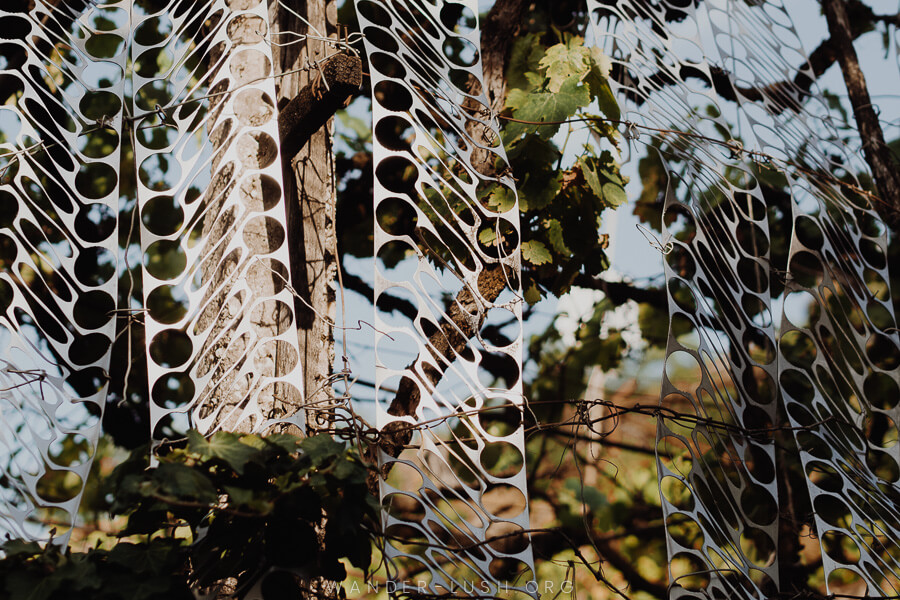
You can find some great local restaurants in Manalat, including Taverna Tradicionale which I mentioned earlier. This is a perfect place to wander and eat dinner either before or after visiting the Ali Pasha Bridge. We liked it so much, we came back the next evening for more.
There’s also a local woman in this part of town who serves stone-ground coffee from her living room. We unfortunately ran out of time before we could visit. If you meet her, let me know how the coffee tastes!
10. Eat oshaf, qifqi & other special Gjirokaster foods
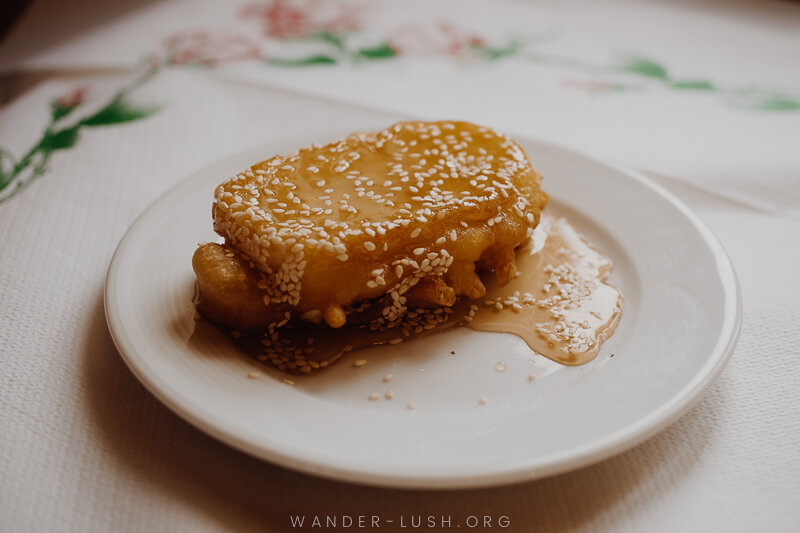
Before I visited Albania, I never could have imagined how impressed I would be by the local cuisine. Some of the best meals we ate in the country were at restaurants in Gjirokaster.
Like Berat, Gjirokaster has its own produce and distinctive culinary traditions. The city’s signature dish is qifqi, arancini-like baked rice balls flavoured with dried or fresh mint leaves and black pepper.
We were encouraged to try the qifqi at Restaurant Gjoca Tradicional in the Old Bazaar, but we found their rendition oily and tasteless. The best qifqi we ate were at Taverna Kuka – crisp and flavoursome.
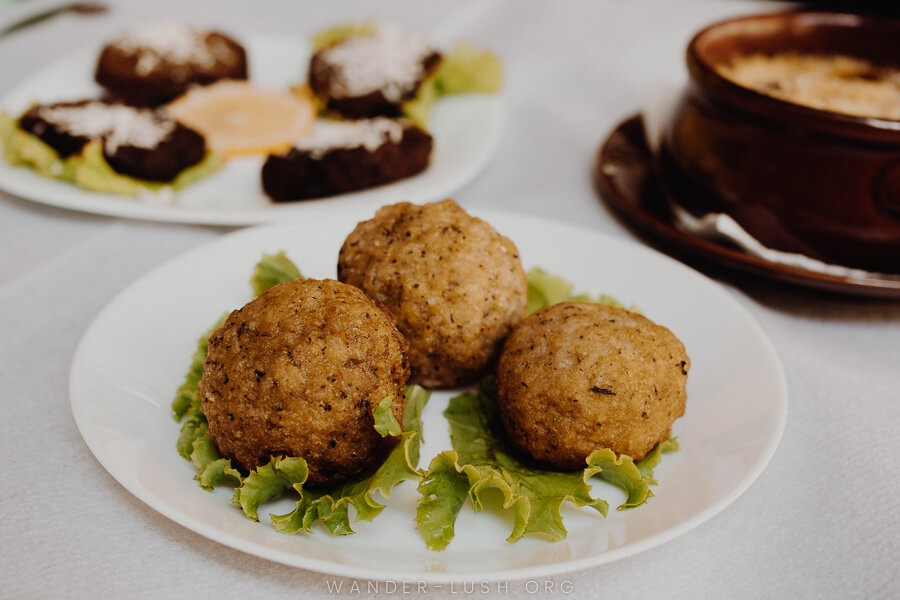
We had an interesting version of qifqi with tomatoes and a grilled veg ragout at Kafe Dionisi in the new part of the city. Find more restaurant recommendations below.
Another must-try is oshaf, a baked dessert (almost like a very creamy rice pudding) made with sheep’s milk, sugar and dried figs. Notice how the cinnamon design dusted on top of the pudding perfectly matches the Old Bazaar pavement!?
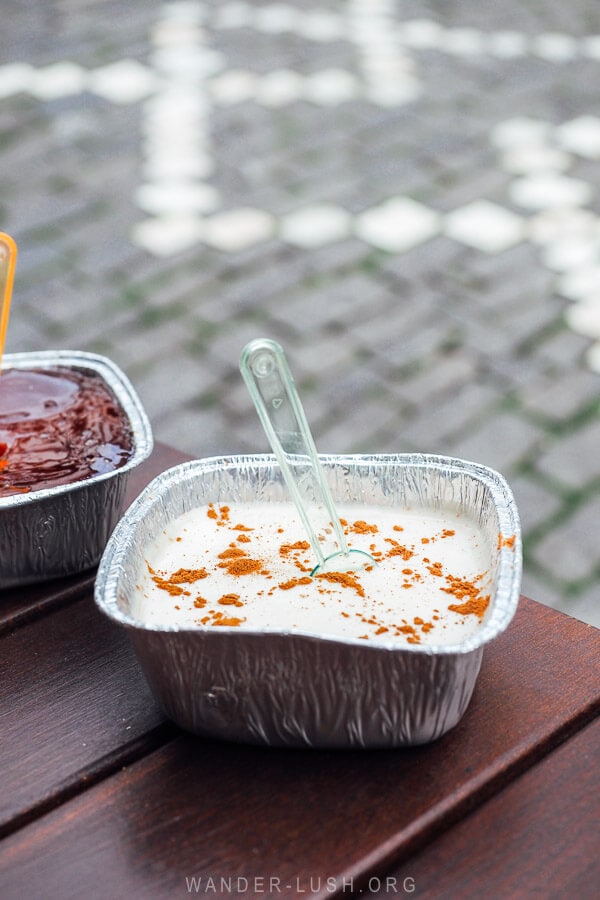
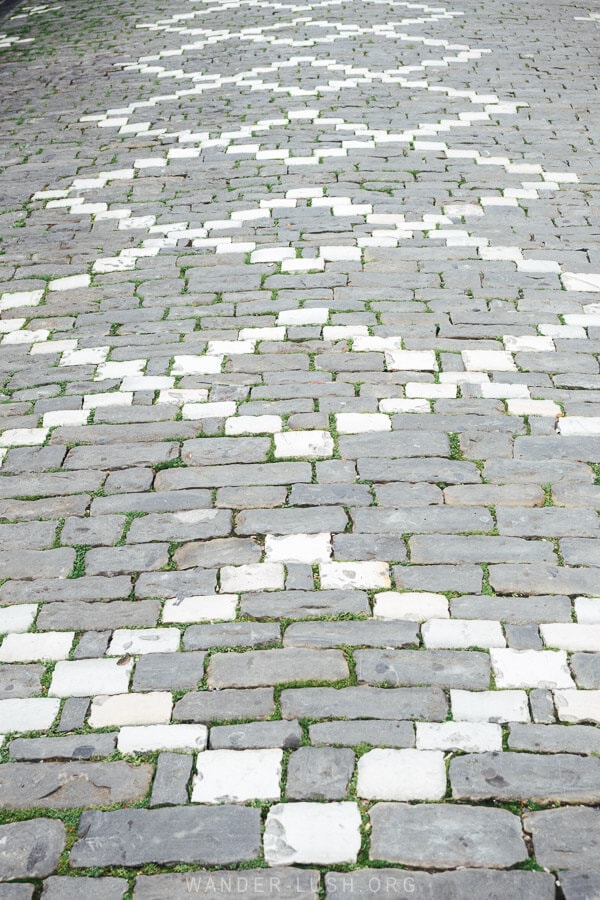
Most restaurants serve oshaf. We loved the grab-and-go version at GLIKO Snack Bar & Pastisserie (we may or may not have eaten it for breakfast!).
Day trips from Gjirokaster
As if there isn’t enough to do inside the old city, beautiful nature right on Gjirokaster’s doorstep makes this an ideal base for exploring Albania’s national parks and beaches.
The Blue Eye (Syri i Kaltër)
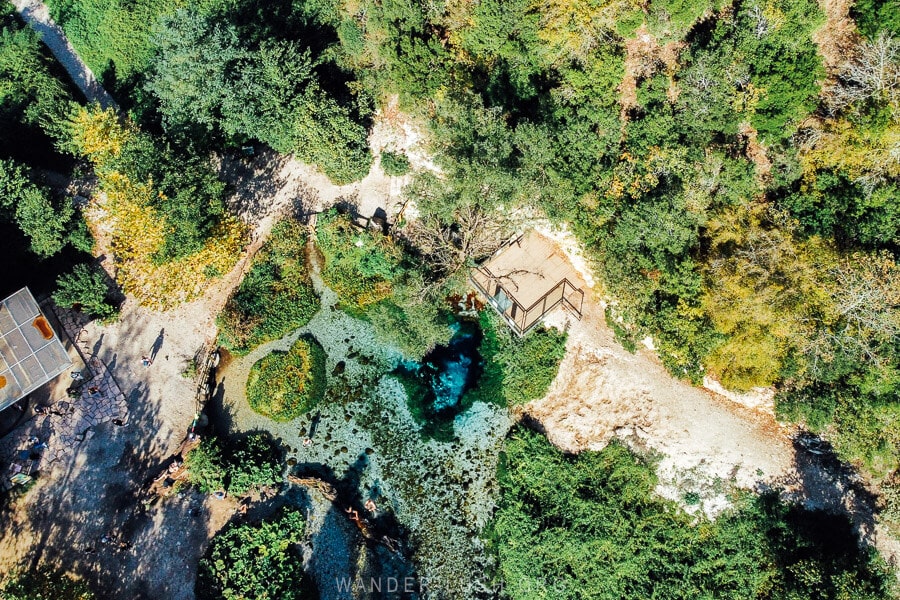
Southern Albania’s famous Blue Eye (Syri i Kaltër) is located less than an hour south of Gjirokaster and can be reached using the Sarande bus. Jump off early and walk the rest of the way to the water hole, around 2km along a paved sidewalk.
Entrance to the Blue Eye costs 50 LEK per person. Swimming is technically prohibited, but people seem to do it anyway.
When you’re done, you can quite easily pick up another bus and continue on to Sarande to explore the beaches along the Albanian Riviera.
Field of Bunkers
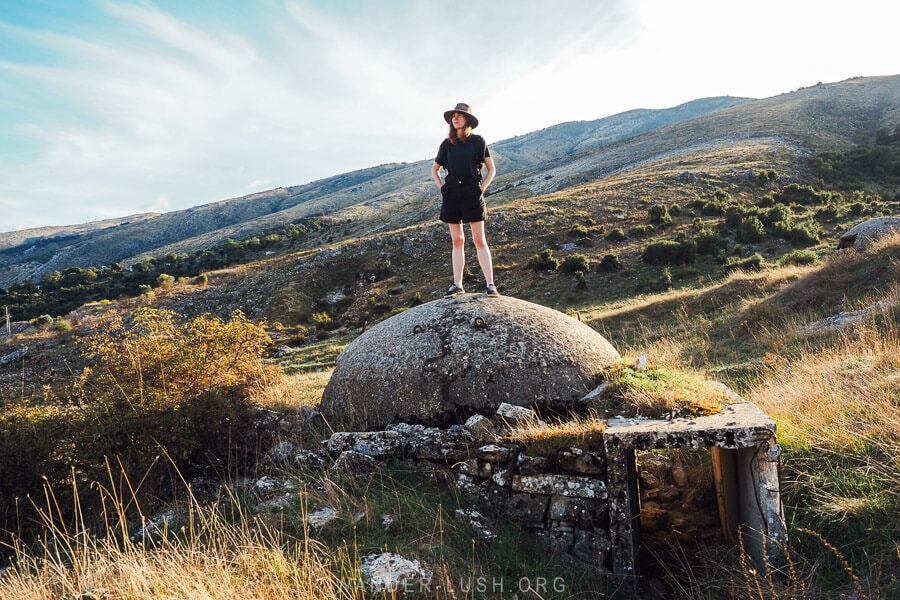
Located just off the highway between Gjirokaster and the Blue Eye, the Field of Bunkers is just what it sounds like: A wide open field next to a quarry that is dotted with concrete domes. We arrived here at sunset on our drive to Gjirokaster from the coast and had a great time taking photos.
What’s cool is that the bunkers are largely in tact. You can see the door mechanisms and even walk inside some of the bigger ones.
The short road into the area is unsealed, but we managed fine with our sedan. Don’t follow Google Maps – take the turnoff that is closer to the petrol station. See my Gjirokaster map below for the exact location.
Tepelena & Ali Pasha’s Aqueduct
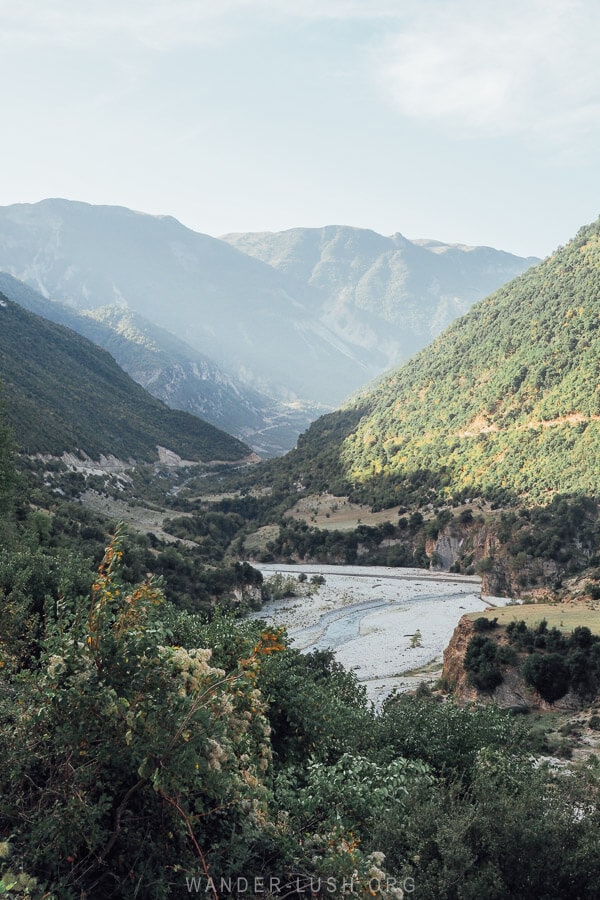
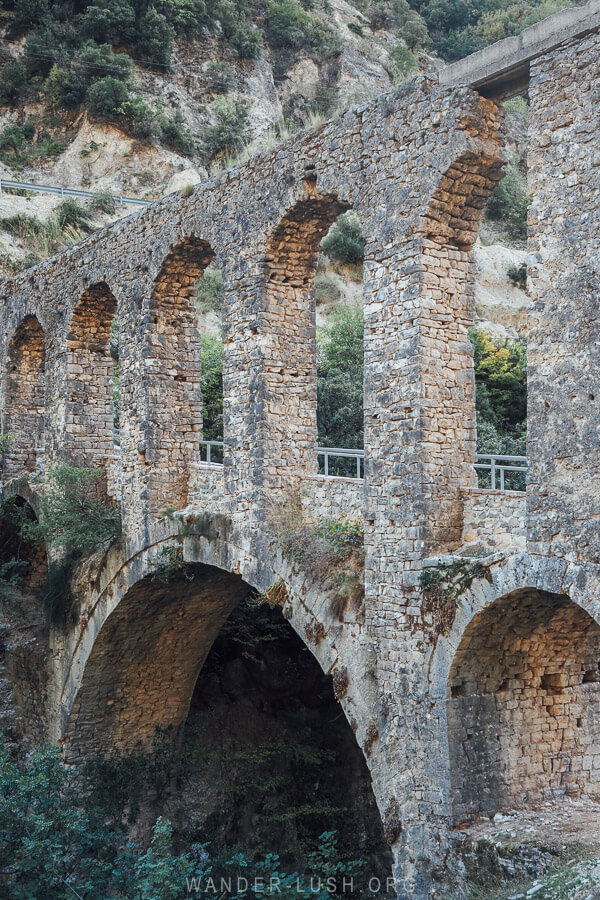
Travelling in the opposite direction towards Permet, you will meet some of Albania’s finest scenery around the Vjosa River. The small city of Tepelena (famous for its connection to Ali Pasha) has a strange castle at its centre and some interesting modern architecture.
A short detour brings you to the Ali Pasha Aqueduct, an arched stone bridge that is essentially a longer version of the aqueduct in Gjirokaster. There is a hiking route nearby, or you can just pull off the highway and walk down to the bridge to examine it up close.
This is one of my new favourite spots in Albania. It would be difficult to reach with public transport, but highly recommend stopping in if you’re driving this way.
Where to eat & drink in Gjirokaster
On our second trip to Gjirokaster we stayed outside the old town area (close to the bus station) and decided to eat at the local restaurants in our neighbourhood instead of walking back to the Old Bazaar. We found the food was much better value (and higher quality) outside of the tourist hub.
In addition to the Old Bazaar restaurants I have already mentioned, here are a few suggestions for local bites.
Top choice: Restorant Pajtimi
This small restaurant is very local but still has an English menu. I ate the best tave kosi baked lamb in yogurt of my life here. Service is friendly, and you can help yourself to cold beers from the fridge.
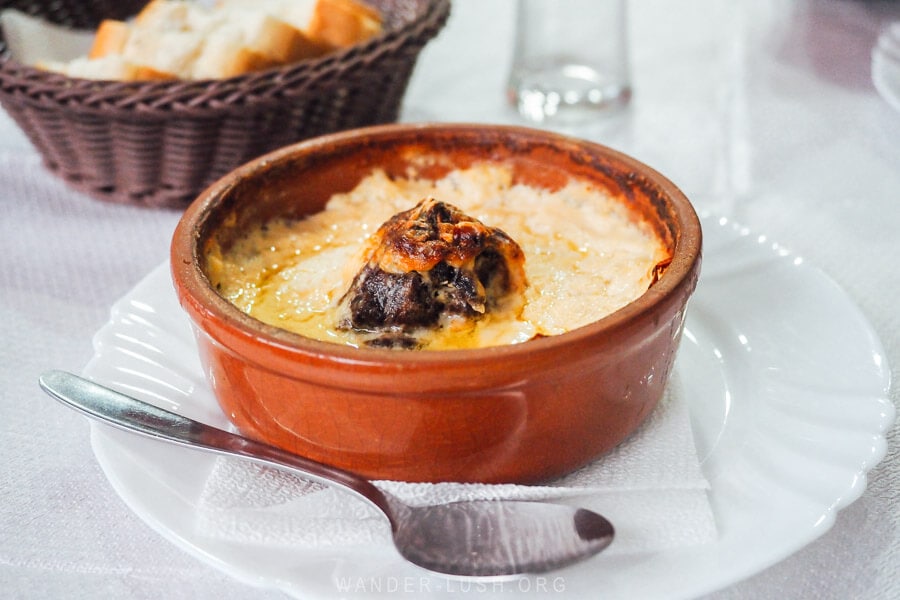
Kafe Dionisi
We had a nice dinner here on our first night back in Gjirokaster. The house version of qifqi is very good, as are the grilled meats.
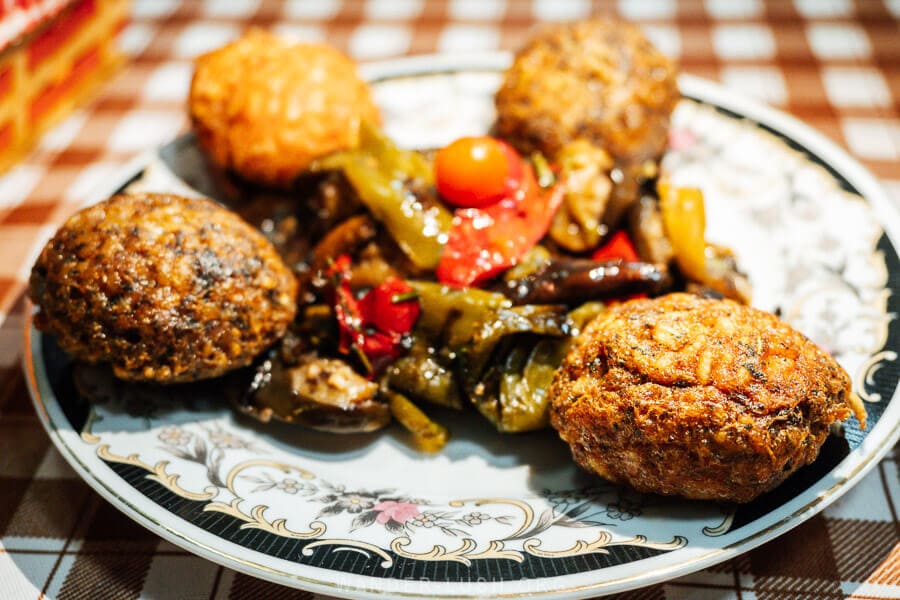
Antigonea Bakery
For a quick morning byrek or sweet bite. They also have a branch in the old town area.
Map of things to do in Gjirokaster
Find all the above points of interest plus my favourite Gjirokaster restaurants plotted out on a map.
Click here to open the map via Google Maps.
How to get to Gjirokaster
From Saranda: There are regular buses to Gjirokaster from Saranda every hour or so from 5am until mid-afternoon. Tickets cost approximately 300 LEK, and travel time is 60 minutes. Alternatively, a taxi from Saranda to Gjirokaster should cost around 6000 LEK.
From Berat: There are at least three buses departing from Berat’s main bus station at 8am and again around 2pm. Tickets cost approximately 900 LEK, and the journey takes 3-3.5 hours.
From Tirana: There are at least 10 daily bus services between Tirana and Gjirokaster starting from 5am. Journey time is 4–4.5 hours, and tickets cost 800-1000 LEK. A taxi from Tirana to Gjirokaster should cost around 15000 LEK.
Tip: Browse bus schedules and fares for Albania on Gjirafa Travel. Always double-check times locally before you travel.
How to get to the Old Town from Gjirokaster bus stop
When arriving in Gjirokaster by bus, you’ll be dropped off at the Regional Bus & Furgon Station in the lower part of the new town (see the approximate location here on Google Maps). It’s a very informal bus stop – more like a road stop with a couple of ticket offices.
When we left Gjirokaster to travel to Korce, we took a coach from a larger bus station on the opposite side of the road.
A 5-minute taxi ride up to the Old City should cost no more than 300–400 lek. But don’t pick up a driver from the bus area. Instead, walk a few blocks in the opposite direction to find a taxi on the street. We got scammed big time by a ‘taxi driver’ waiting at the bus station.
Alternatively, you can walk for about 30 minutes (mostly uphill) to reach the centre of town, or take a local bus from one of the stops along Bulevardi 18 Shtator for around 30 LEK per person.
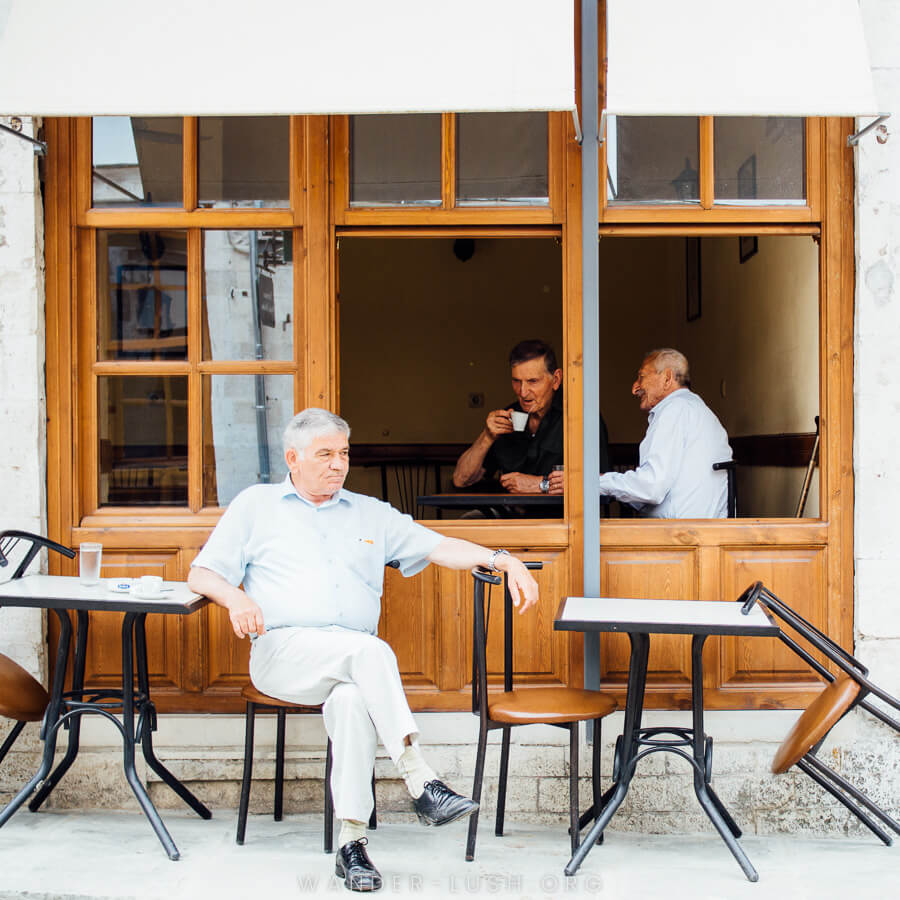
Gjirokaster travel tips & FAQ
Is Gjirokaster safe for tourists?
In my experience, the whole of Albania (and especially smaller cities such as Gjirokaster) is generally very safe for tourists – provided you exercise common sense and caution.
Pickpocketing does happen (and are more likely to happen in tourist hotspots like this), but foreigners are very regularly targeted. In my experience, Albanian people are overwhelmingly warm and hospitable, eager to help out whenever they can (whether it be with directions or a cup of coffee).
As a woman, I felt safe walking around Gjirokaster by myself, including at night. I would have no issue recommending it as a destination for solo female travellers.
Is Gjirokaster expensive?
Prices in Gjirokaster are comparable to Berat – that is to say a bit more than in Tirana or Korca. You can easily save money by skipping the paid tourist attractions such as the old houses and museums. It’s easy to find generous meals at an affordable price, especially if you leave the Old Town area and walk down to the new town where the bus stop is.
More ideas for Albania
Gjirokaster travel blog: Pin it!
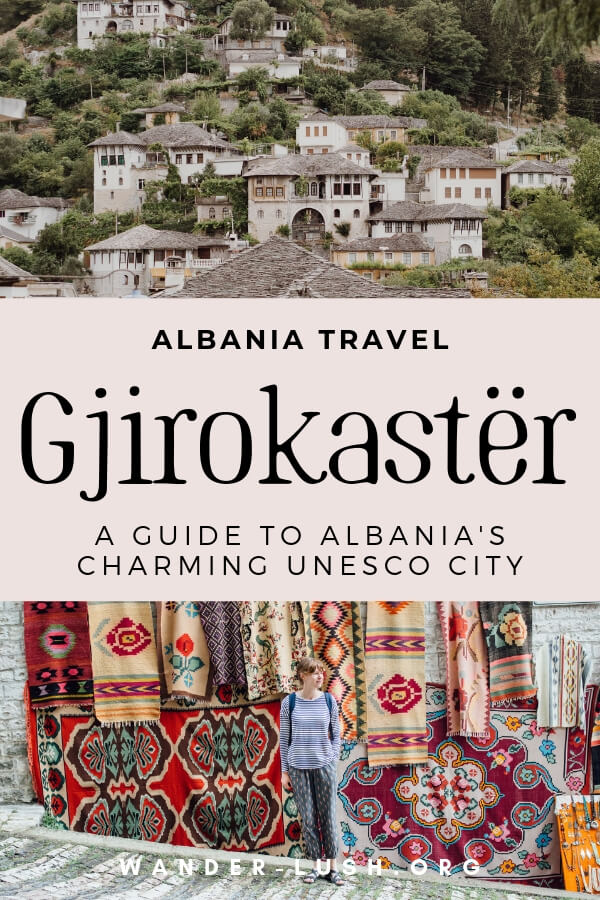
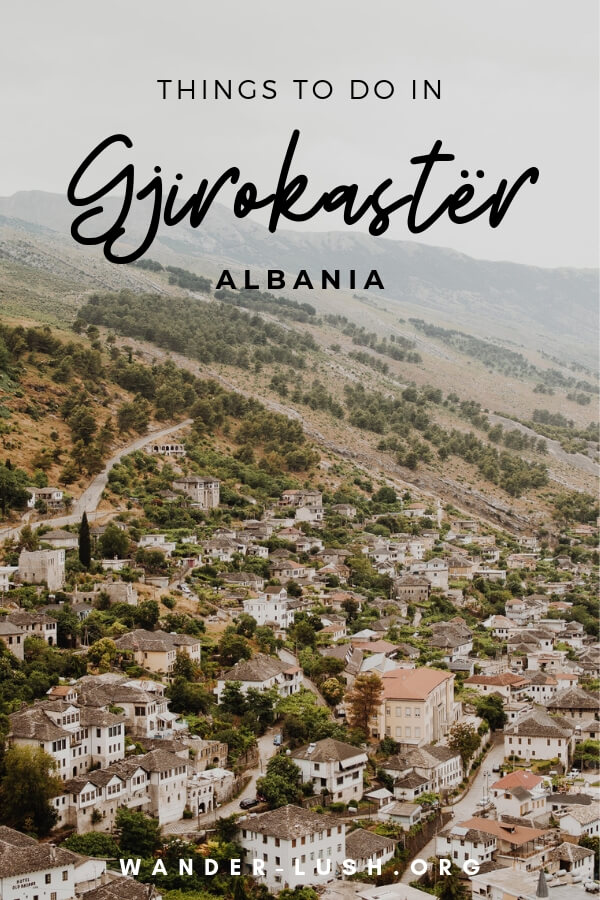

Albania Travel Guide
Discover insider tips, itinerary inspiration, and all the best things to see, do and experience in Albania!
Albania Essentials
My favourite resources and tools for planning a trip to Albania.
More from Albania
Albania Travel Guide
Discover insider tips, itinerary inspiration, and all the best things to see, do and experience in Albania!
More from Albania



